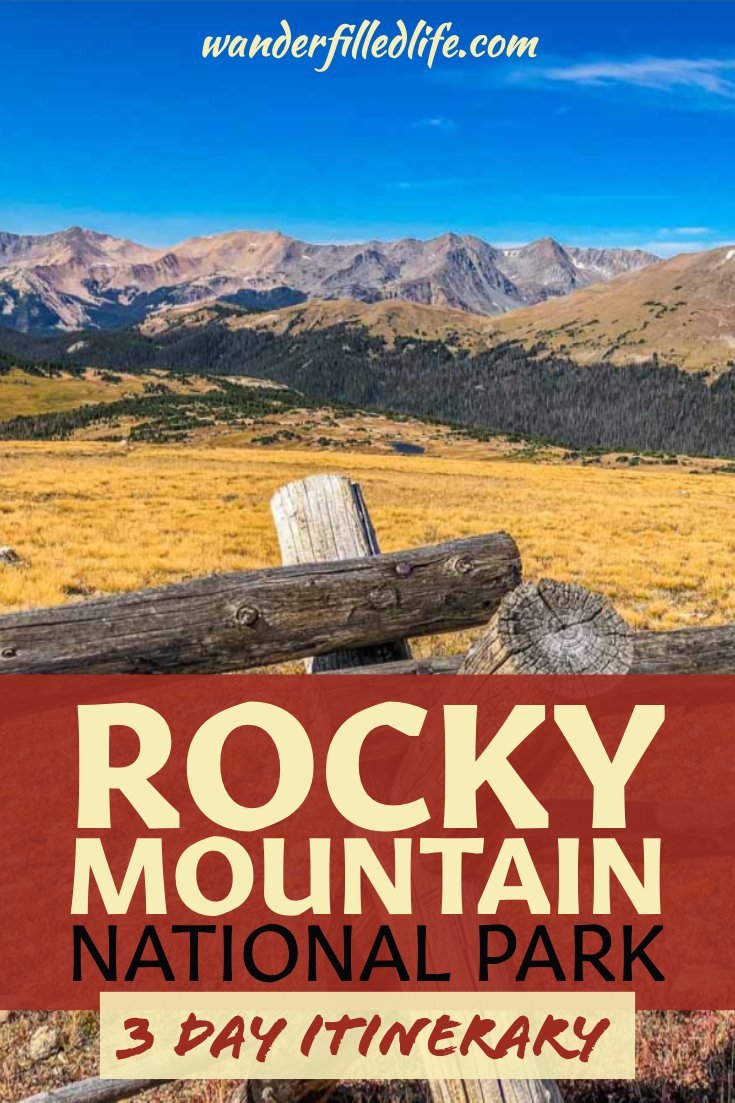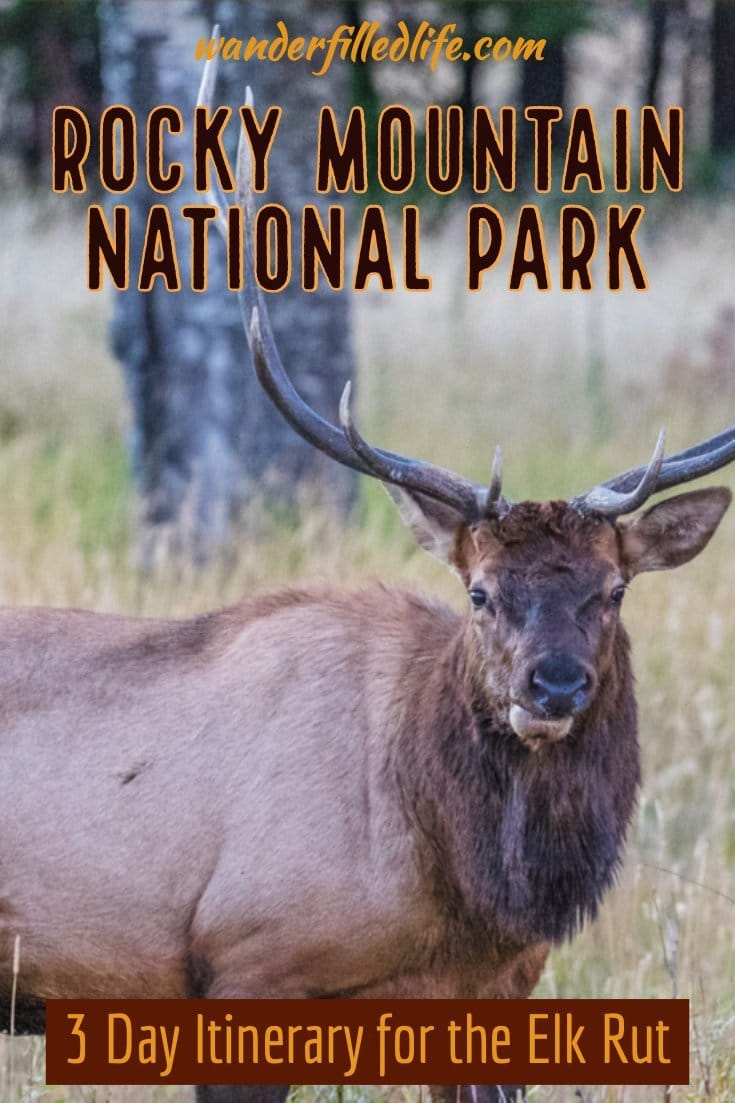Last Updated on February 22, 2024 by Grant
We were looking for some peace and quiet after six stressful weeks back at work and Rocky Mountain National Park did not disappoint. There are gorgeous views at nearly every turn and there is nothing like a mountain lake to refresh your soul. This three day Rocky Mountain National Park itinerary will provide you will the highlights of the park and plenty of time to reconnect with nature.
We first visited Rocky Mountain National Park back in December 2013 for a quick jaunt in the snow. We tried to return in the summer of 2014 but could not find a place to stay so we had to move on.
When the opportunity to come out in the fall and see the park again came along, we jumped at the chance.
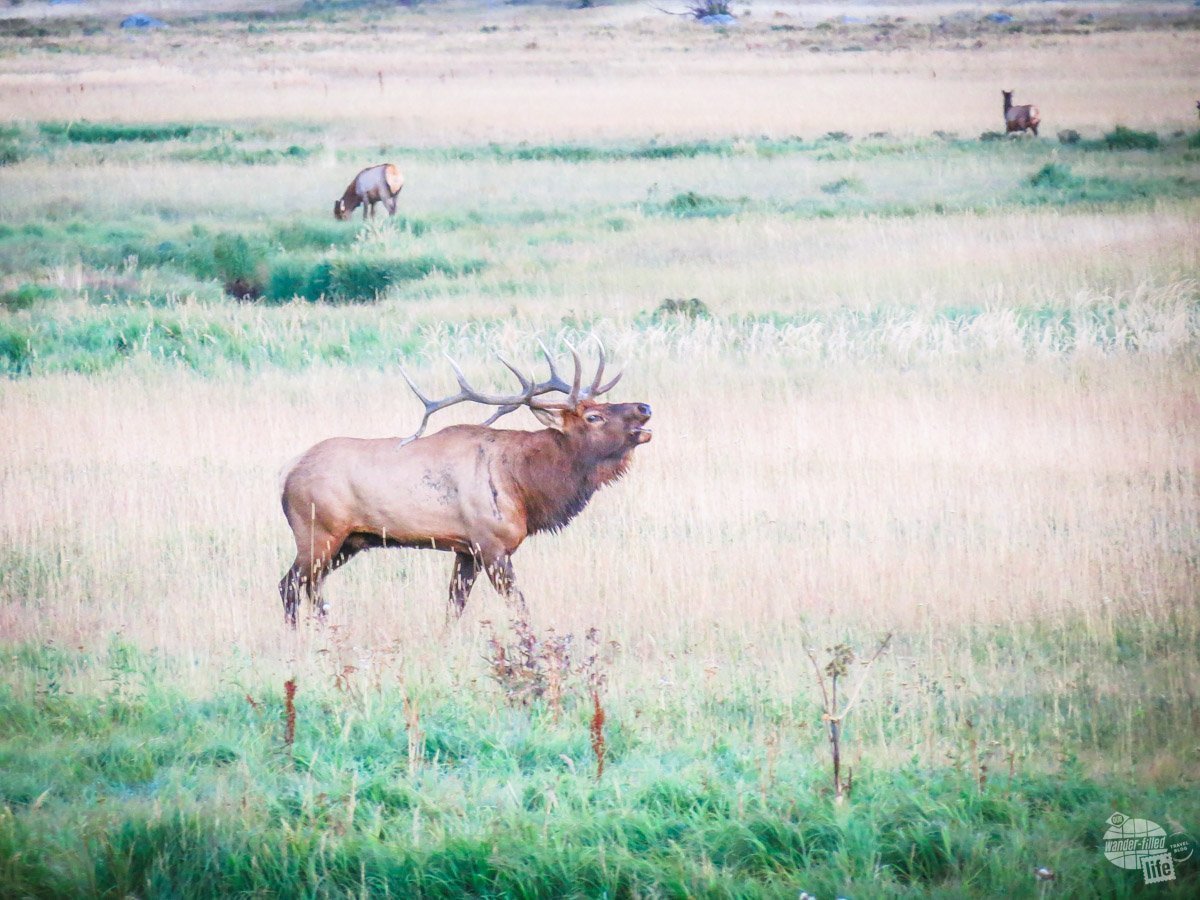
In September, you can’t miss the haunting sound of elk bugling in the valleys. Indeed, the Rocky Mountain National Park elk rut is an experience any nature-lover must enjoy. The calls permeate the lower elevations of the park.
The weather was almost perfect in late September. The temperatures were warm during the day, cool at night. The leaves were just starting to turn. It made for a great experience camping in the camper van we got from Outdoorsy.
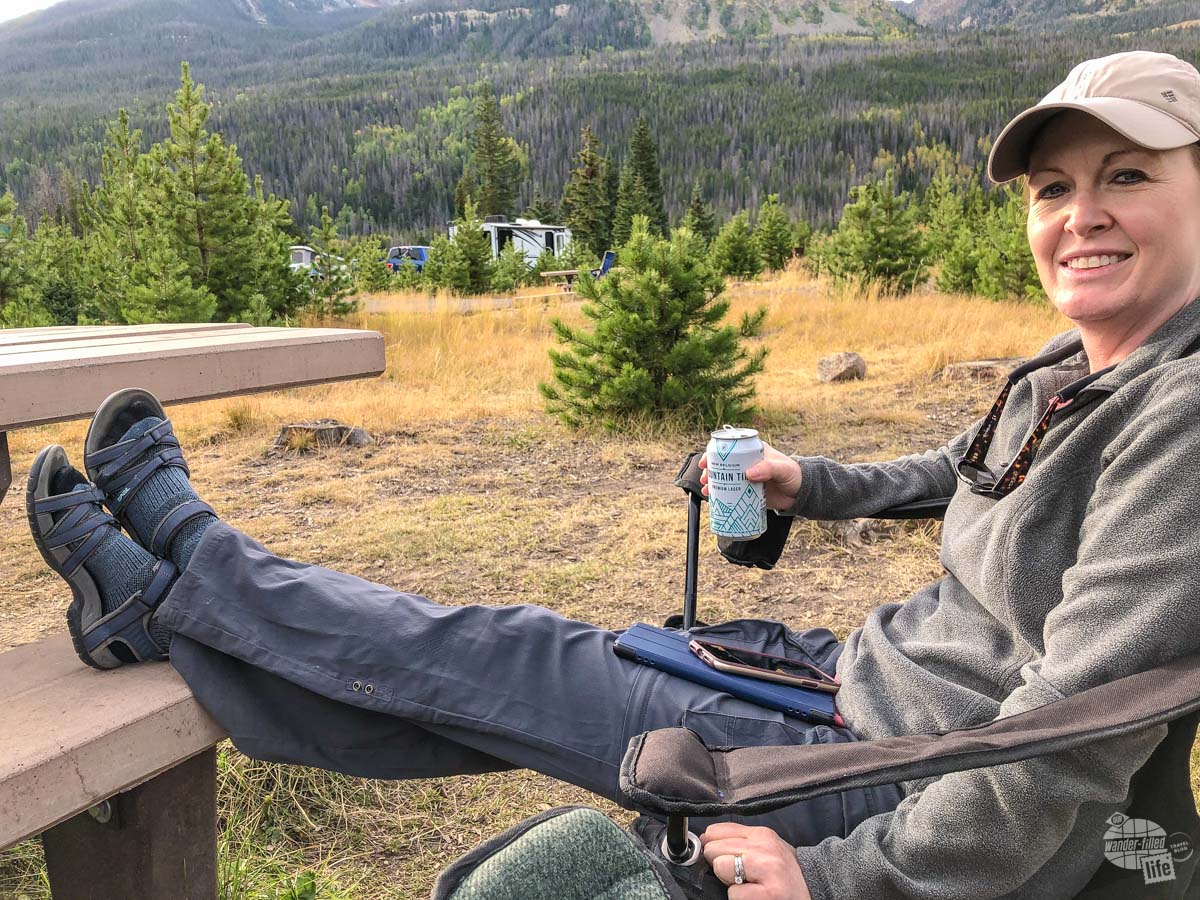
In short, three days in Rocky Mountain National Park was the perfect getaway.
(Disclaimer: When we link to places where you can buy our stuff or places we stayed, we are using special codes that earn us commissions on the sales at no additional cost to you. Please see our Review Policy for more information.)
Our Three Day Rocky Mountain National Park Itinerary
We spent three days exploring the park and feel that is the perfect amount of time for anyone who wants to experience the highlights of the park. We were able to see all of the “must-see” sites, take several hikes of various lengths and had plenty of time in the evening to watch the elk rut.
When planning your Rocky Mountain National Park itinerary, you’ll need to consider where you want to stay and how much you want to do. You’ll need the better part of a day to drive Trail Ridge Road across the park and back. With only one day, you will likely only have time for a short hike or two. With two or three days, you can really explore both sides of the park and get in some longer hikes.

On the east side of the Rocky Mountain National Park, Estes Park offers plenty of food and lodging options. On the west side, Grand Lake is a bit smaller than Estes Park, but still has plenty of options. The route between them, Trail Ridge Road is not an easy drive, but it is a must-do for your Rocky Mountain National Park itinerary.
Day One – West Side (Bear Lake, Sprague Lake and Moraine Park)
We spent our first day (a Sunday) in the popular Bear Lake area. After a brief stop at the Beaver Meadows Visitor Center, we headed for the Bear Lake trailhead.
Honestly, we should have skipped the visitor center and headed straight for Bear Lake. This is one of the most popular areas in the park and the parking lot fills early. There is a Park & Ride to alleviate the traffic but even the Park & Ride lot was nearly full by the time we got there shortly after 9 a.m.
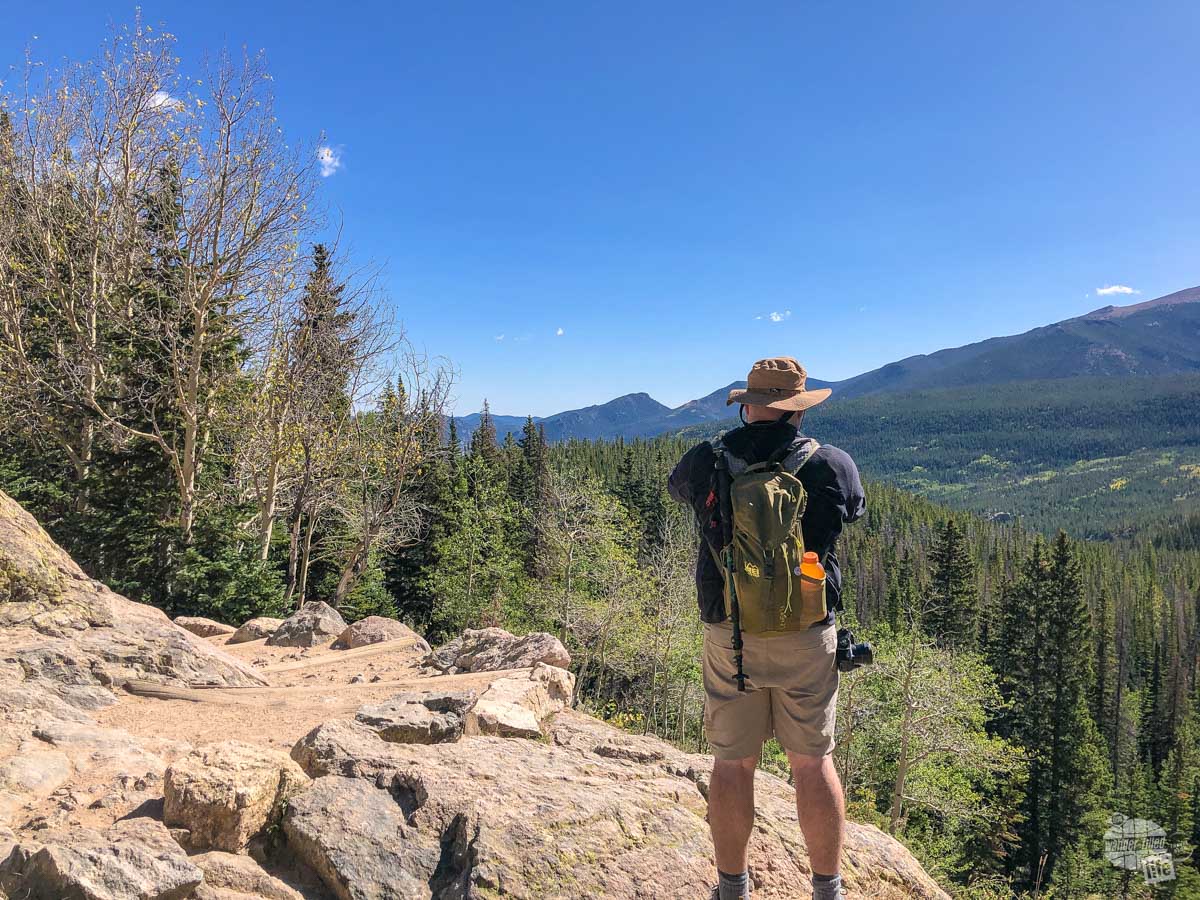
Pro tip: Rocky Mountain NP serves as a weekend getaway for a lot of folks living along the Front Range and weekends can be pretty crowded.
The Park & Ride, though, turned out to be perfect for the hikes we ended up taking. We were able to get off the shuttle at the Bear Lake Trailhead and get back on at the Glacier Gorge Trailhead, allowing us to loop our hike.
The Bear Lake Area
There’s a good reason the Bear Lake area is so crowded… It is gorgeous! We started with the easy loop around Bear Lake (half a mile) and then hiked out to Emerald Lake, passing Nymph Lake (my favorite) and Dream Lake along the way. All told, it was a bit more than four miles.
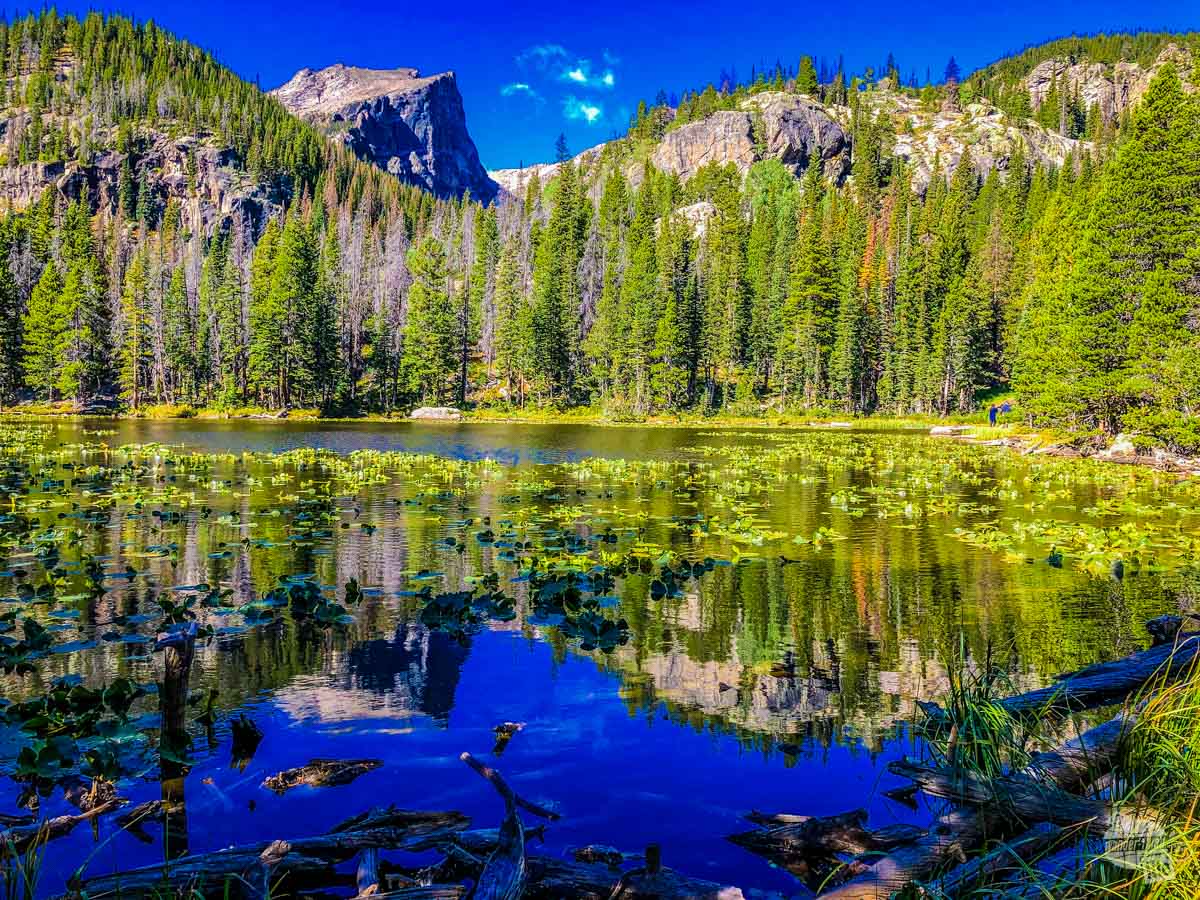
Then we hiked a connecting trail and on to Alberta Falls, adding on another 1.5 miles by the time we got back to the Glacier Gorge Trailhead.
Alberta Falls is a neat cascade on the Glacier Gorge Trail and is worth the mile round trip to see. There’s not much of an elevation gain and the views are pretty spectacular
Check out our 10 essentials for hiking here.
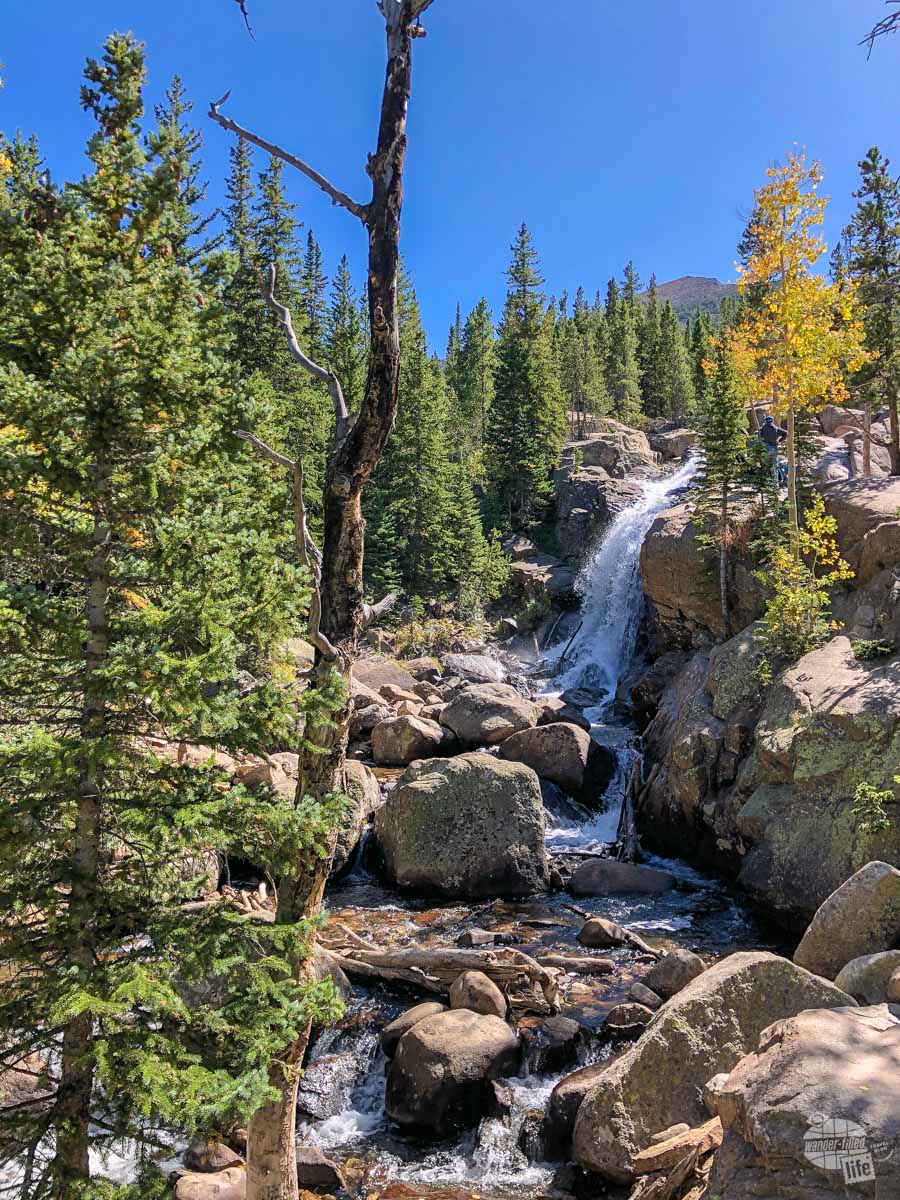
None of the hikes were strenuous but we were over 9,000 feet, so the altitude can hit you pretty hard. We thought about turning the hike into a much longer loop, adding on another 4.5 miles but decided not to exhaust ourselves on the first day.
Whether you hike all the way to Emerald Lake or Alberta Falls or stick with the easy stroll around Bear Lake, this area is a must-see for any Rocky Mountain National Park itinerary. The landscapes around Bear Lake truly are some of the best in the park. In terms of hiking, the trail around Bear Lake is flat and easy. The hikes up to the other lakes offer a bit of elevation change, but nothing overly strenuous.
Looking for Wildlife at Sprague Lake and Moraine Park
On the way back down to Moraine Park, we doubled back to Sprague Lake to eat a snack and just relax. This area is known for moose and has an easy trail leading around the lake.
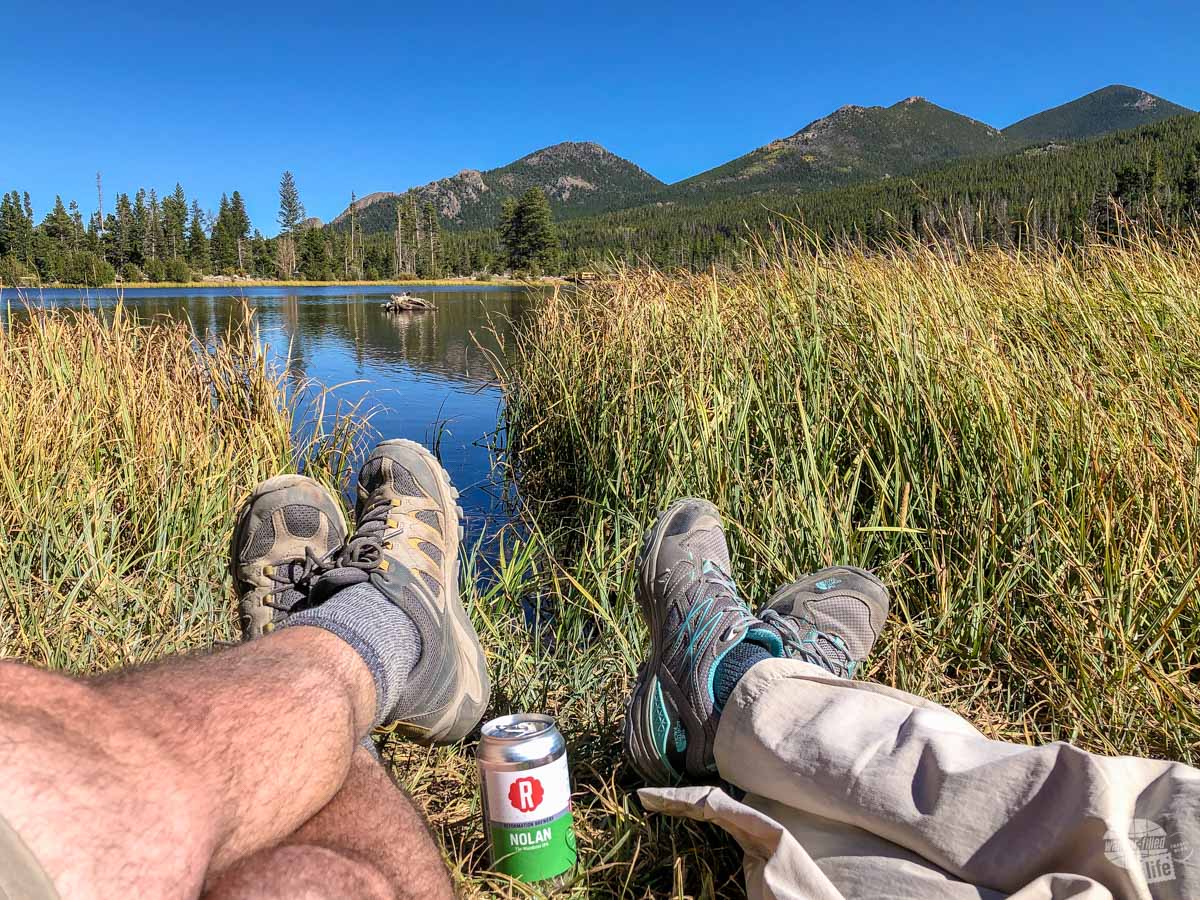
This is a perfect spot for a picnic (there are plenty of tables) and a great place for families with small children or those with restricted mobility. The lake is idyllic with mountains to the west. The paved trail around the lake is an easy, relaxing walk.
Just down the road is the Moraine Park Discovery Center. This visitor center has a lot of the exhibits the other visitor centers lack. This is the perfect spot for parents to bring their kids to learn about the geology of the area plus the flora and fauna. It also has a great view of the Moraine Park area and we could easily spot several elk in the valley.
FYI: In Colorado, upland valleys are referred to as “parks.”
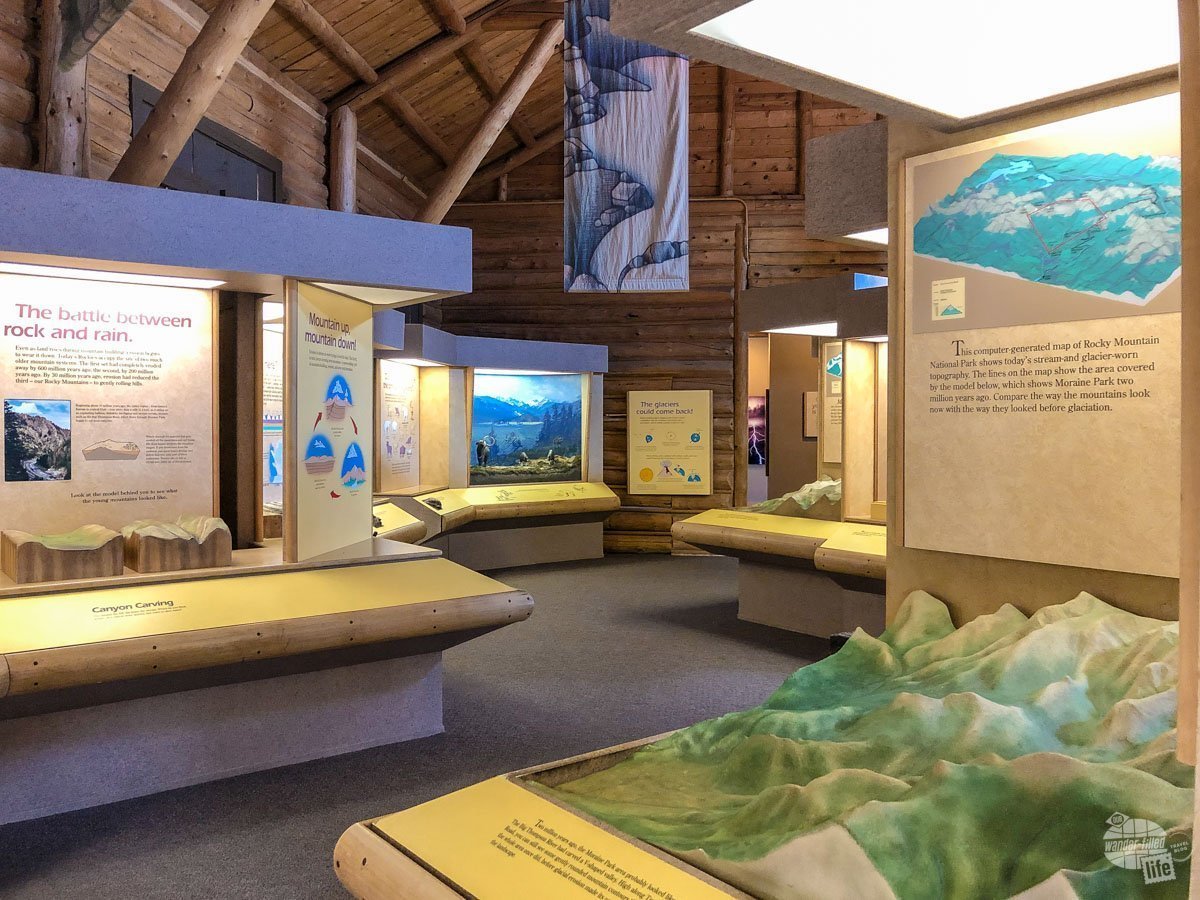
For our first night, we camped in the Moraine Park Campground. From here, we were able to walk down to the road so we could watch and photograph the elk.
On our Winter 2013 trip, we hiked along the Cub Creek Trail at the end of Moraine Park and thoroughly enjoyed the hike even with the snow. For this trip, we decided to spend our time in the late afternoon relaxing at the campground. We headed back to the road around dusk to enjoy the elk rut.
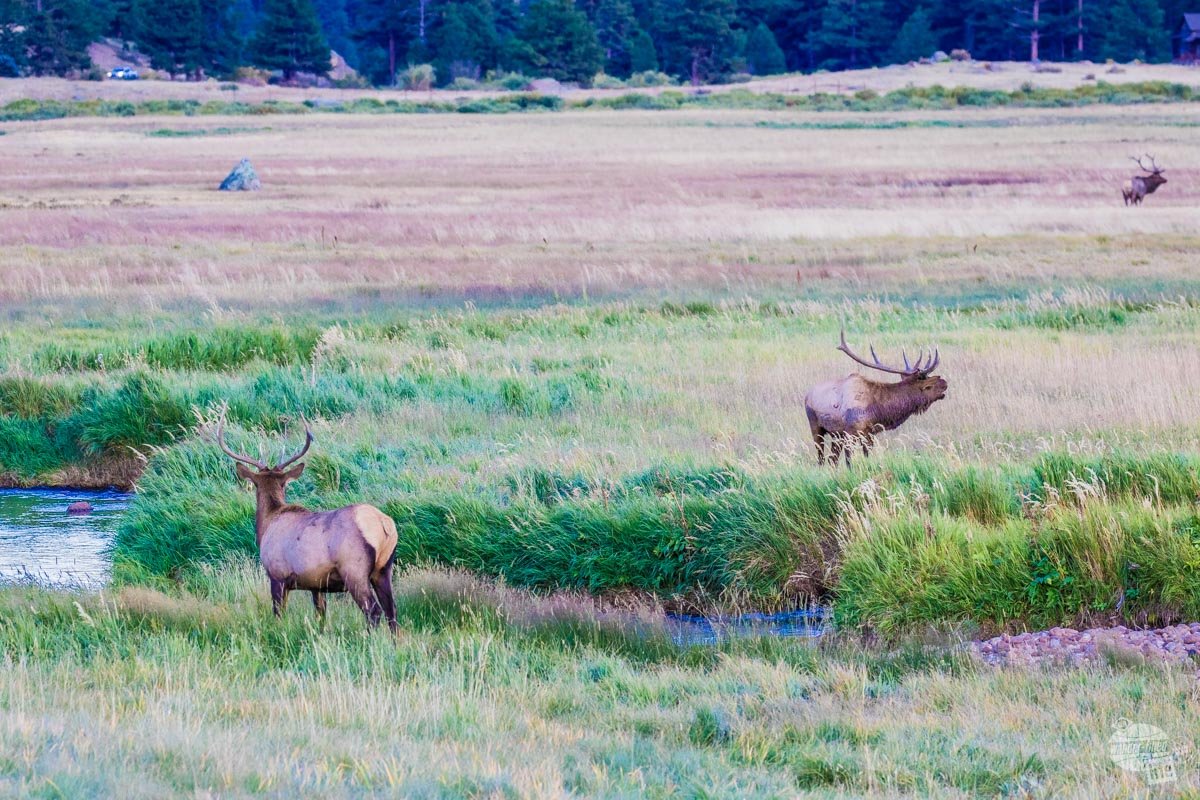
To say there were a lot of bull elk vying to mate is an understatement. We saw at least 12 bulls pursuing various cows throughout the valley. The females, however, did not seem interested.
A more dominant bull elk came over from another part of the valley and ran off a couple of lesser bulls. It seems he just wasn’t willing to lose a single cow from his harem of about 20.
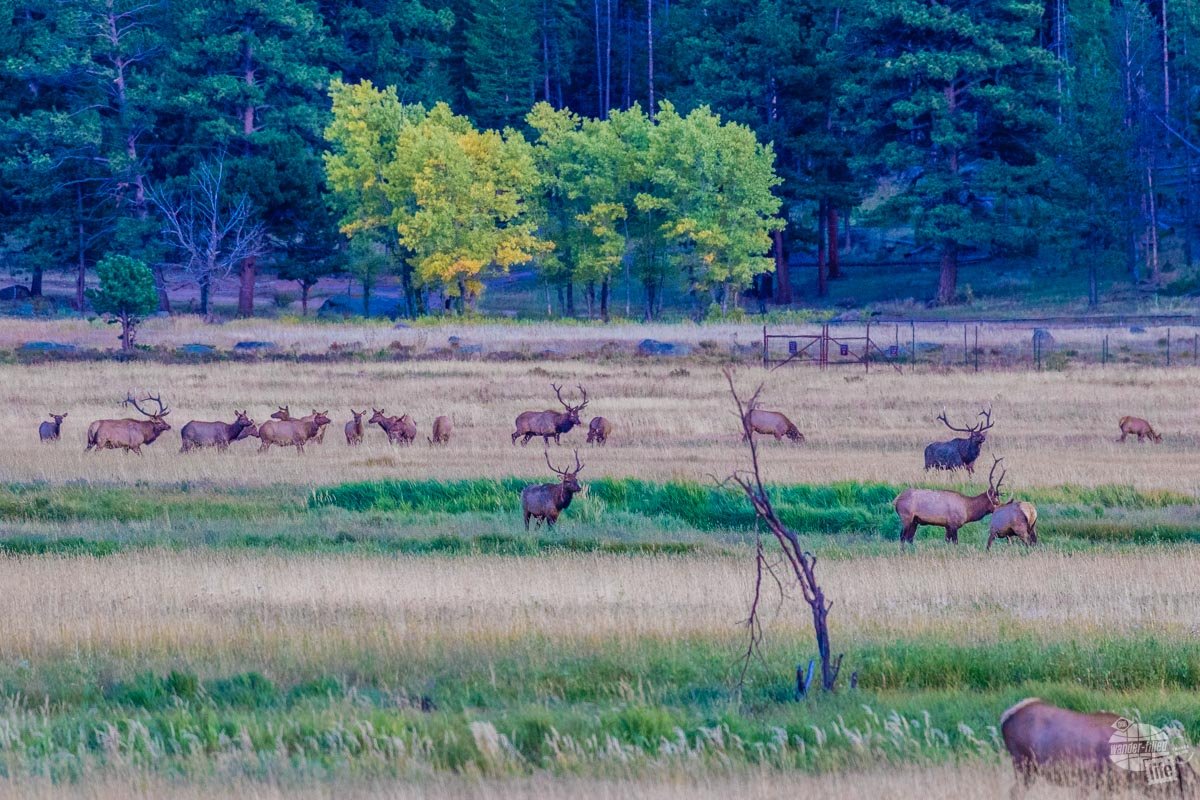
Day Two – Old Fall River Road and the Western Side of the Park
Our second day in the park was spent driving across the peaks to the western side of the park. We chose to drive the one-way Old Fall River Road, which is only open from June to September. We got lucky that the park had not been hit by a major snowstorm yet and we were able to drive the road in late September.
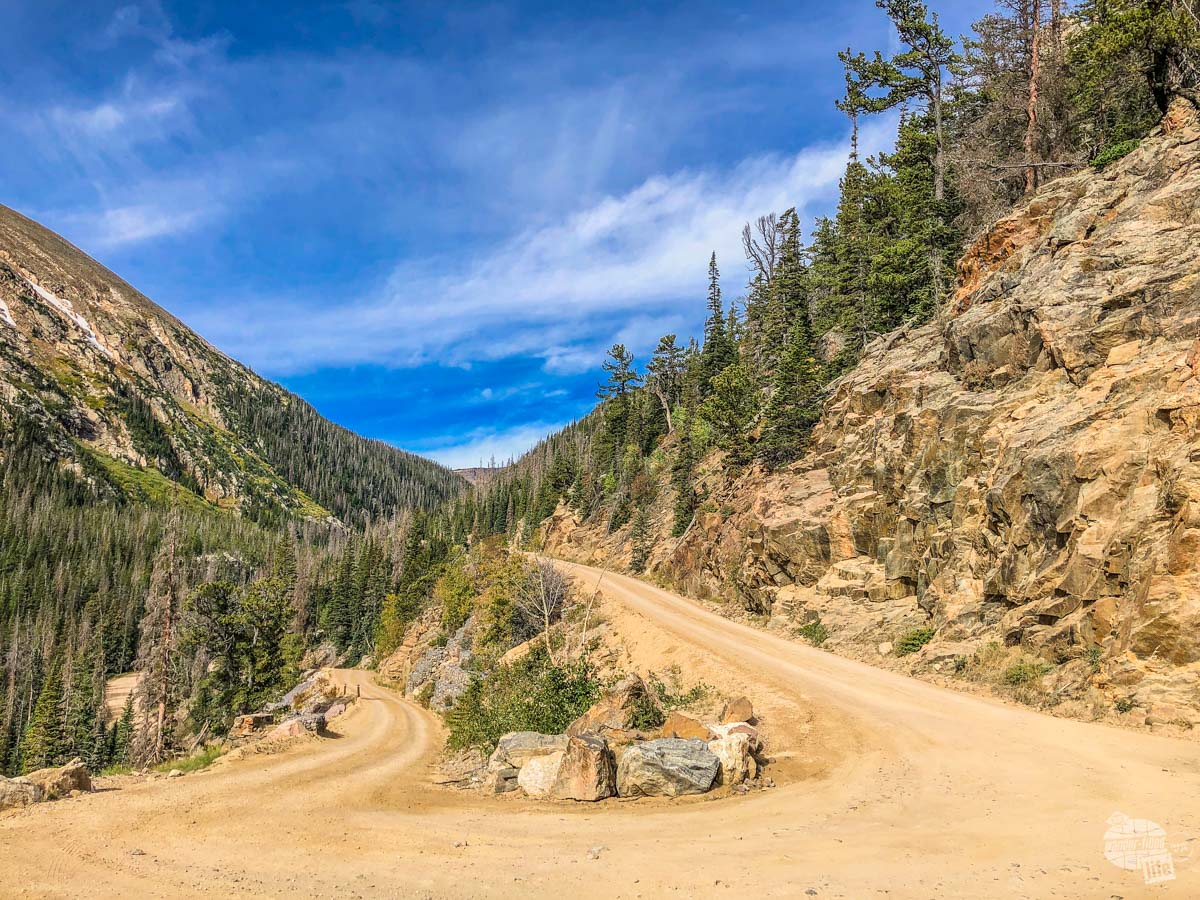
Old Fall River Road is the original route through the mountains, following the Fall River all the way up to nearly 12,000 feet as it crosses the mountains. The road is a single-lane, one-way dirt road with plenty of switchbacks to navigate. While it had a few rough spots, we were easily able to handle the road in the rented camper van.
The views along the road are tremendous. We especially enjoyed the views at Chasm Falls looking back east toward Horseshoe Park.
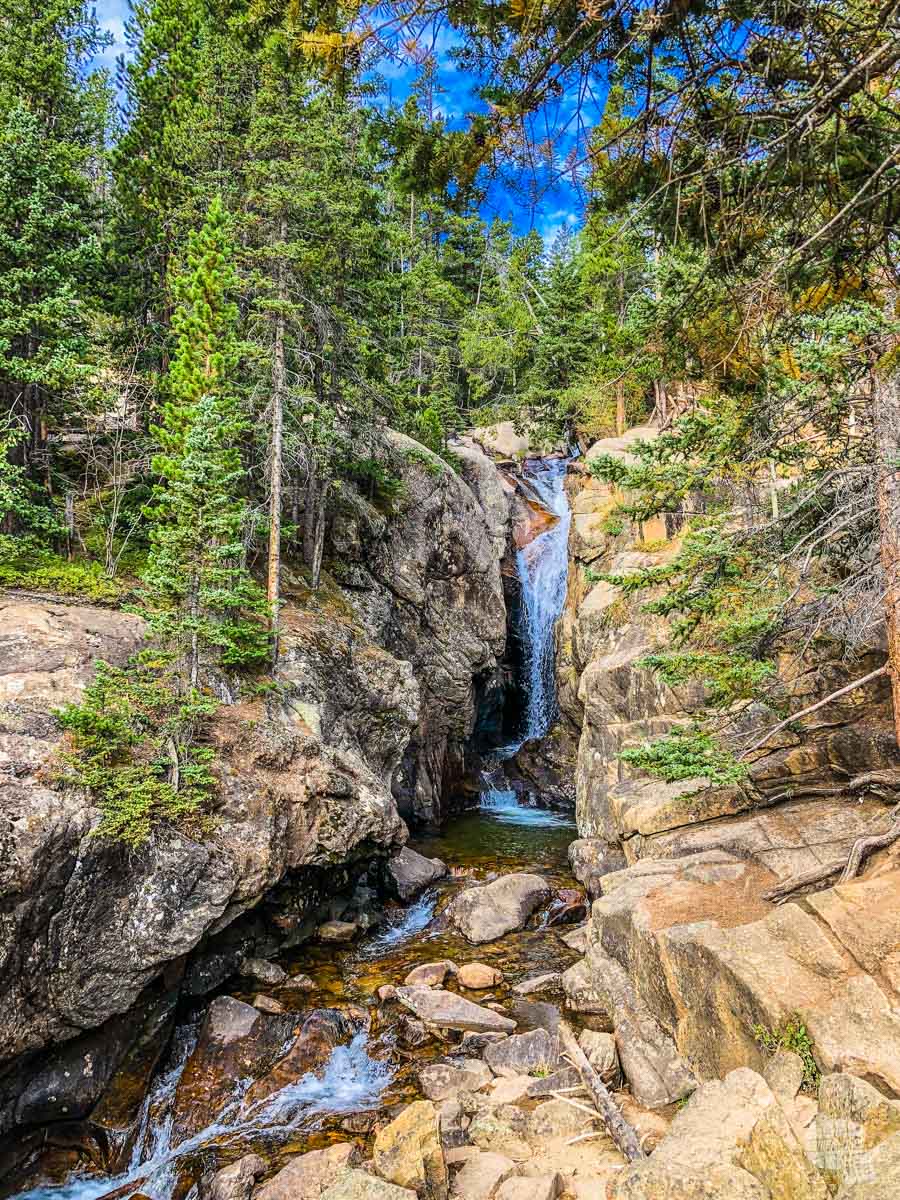
The road ends right at the Alpine Visitor Center, the highest elevation visitor center within the National Park Service. While there, we took the brief hike to get up to the “top,” gasping the whole way. We were definitely feeling the 12,000-foot altitude on that short hike!
The Alpine Visitor Center has some basic exhibits, a small bookstore and fabulous views. Next door you’ll find the snack bar and large gift shop for those looking for souvenirs or munchies. There are also restrooms outside but be prepared for a line on busy days.
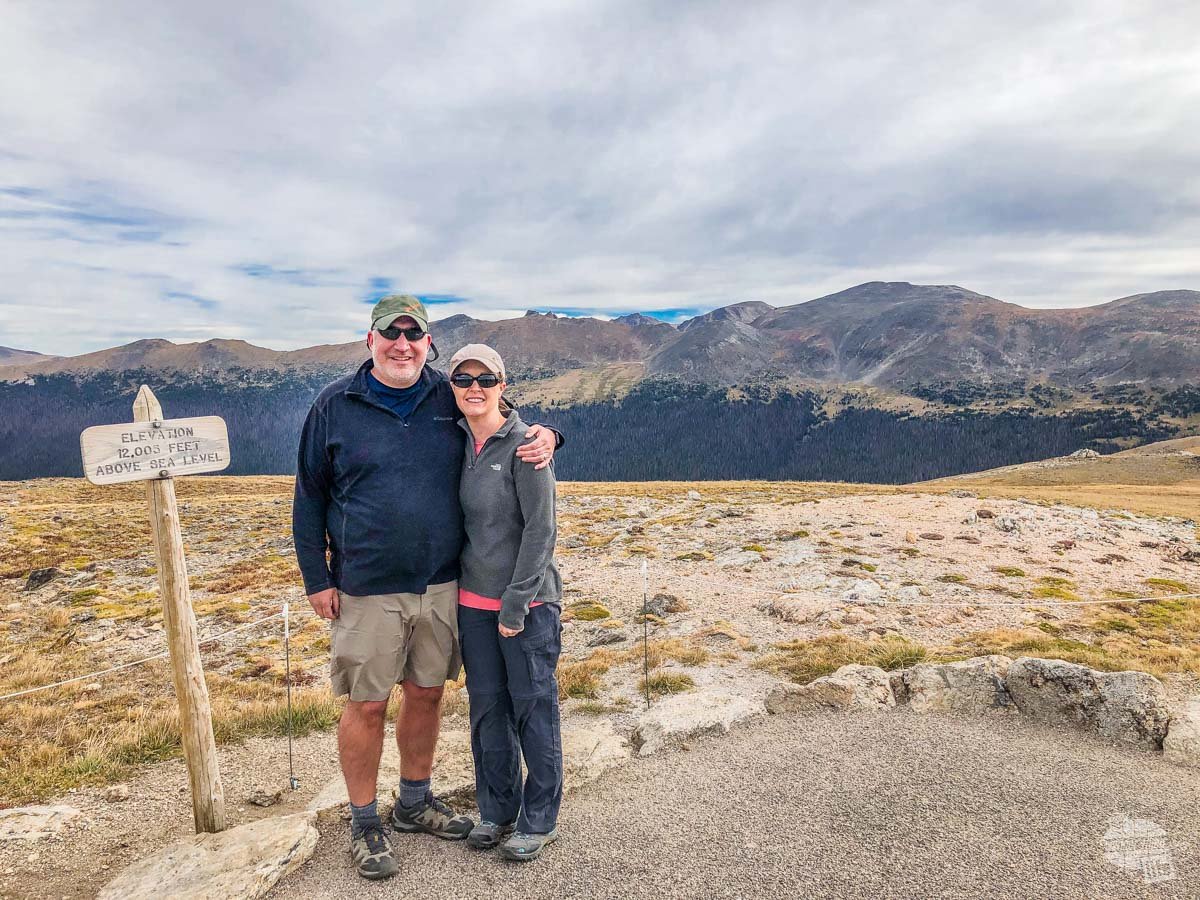
Continuing west on Trail Ridge Road, we crossed Milner Pass and with it, the Continental Divide and kept going to our campground at Timber Creek. We secured a campsite for the night (it’s first come, first serve) and ate lunch before heading on to the Holzworth Historic Site.
This is the site of the Holzworth homestead, which they turned into a guest ranch, the Never Summer Ranch. We walked out to check out the old guest ranch and got a really cool surprise… the river flowing through Kawuneeche Valley is the Colorado River! Where we crossed was only a few miles from the headwaters of one of the most important rivers of the West.
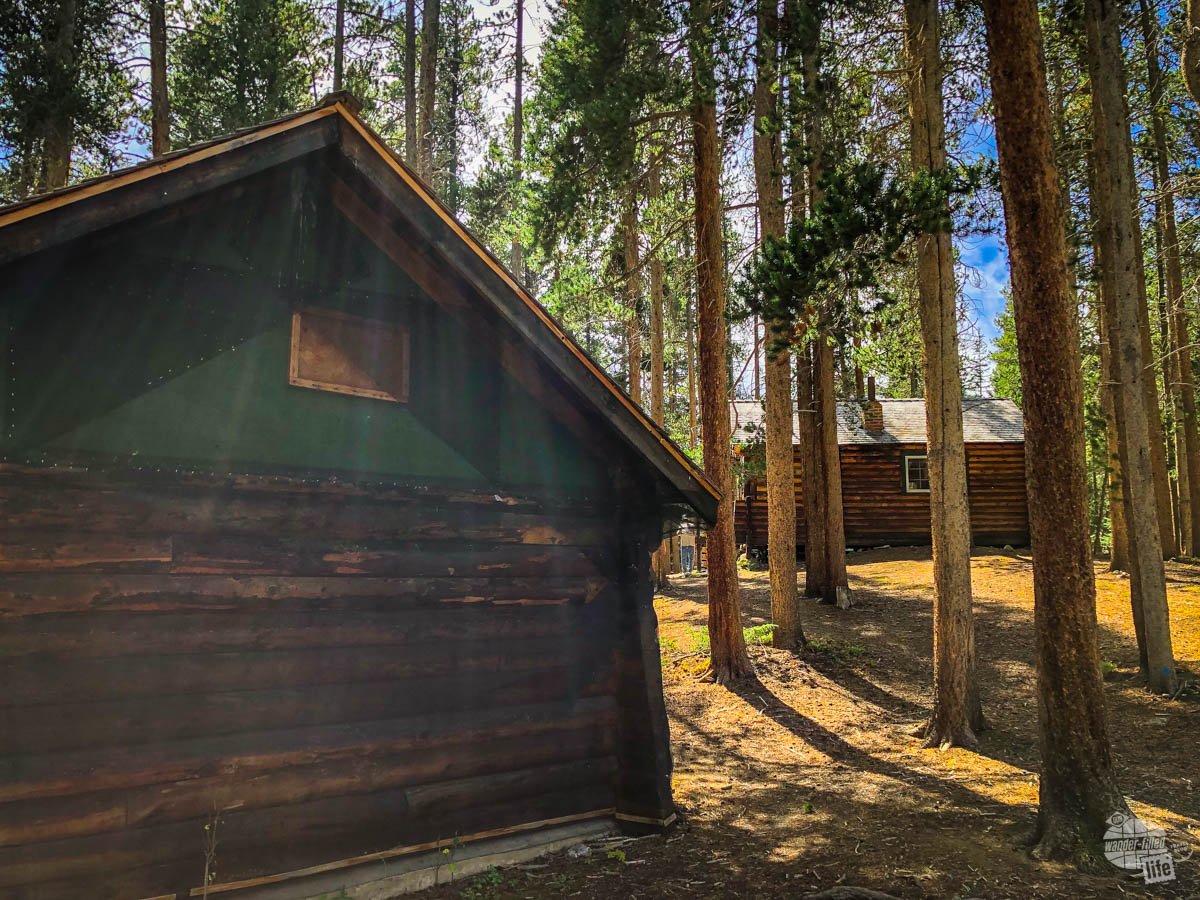
Adams Falls and the East Inlet Trail
Just past the town of Grand Lake at the southwest corner of the park is the East Inlet Trailhead. Most folks who hike the trail only do the brief hike to the scenic Adams Falls. While we enjoyed the hike out to the falls, the real treat is just past that.
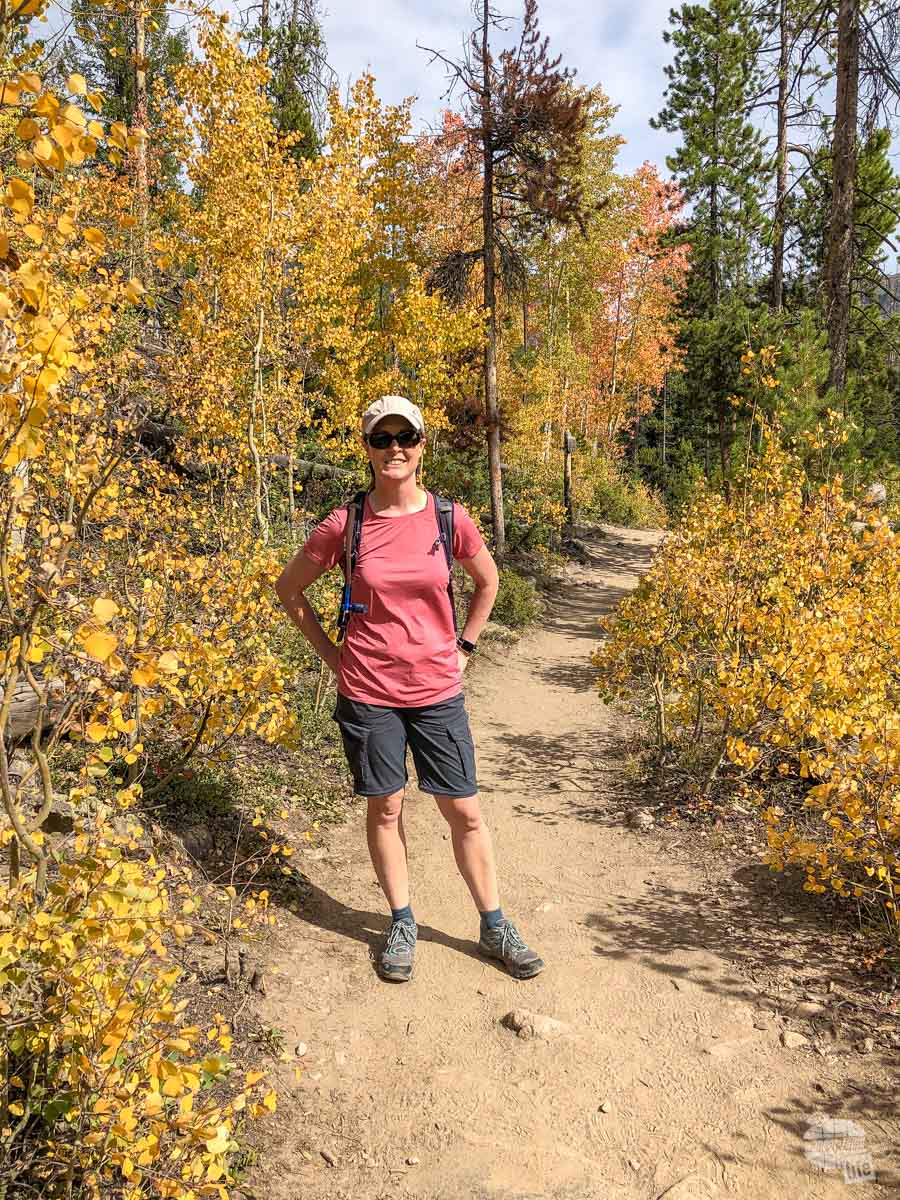
If you spend just about 15 minutes hiking past the falls, you will be rewarded with a positively spectacular valley with a creek flowing through it.
We kept going, enjoying the sublime scenery until we had done about a mile and a half and then turned back. On the way back, we came across a female moose munching on some grass in a field… So cool!
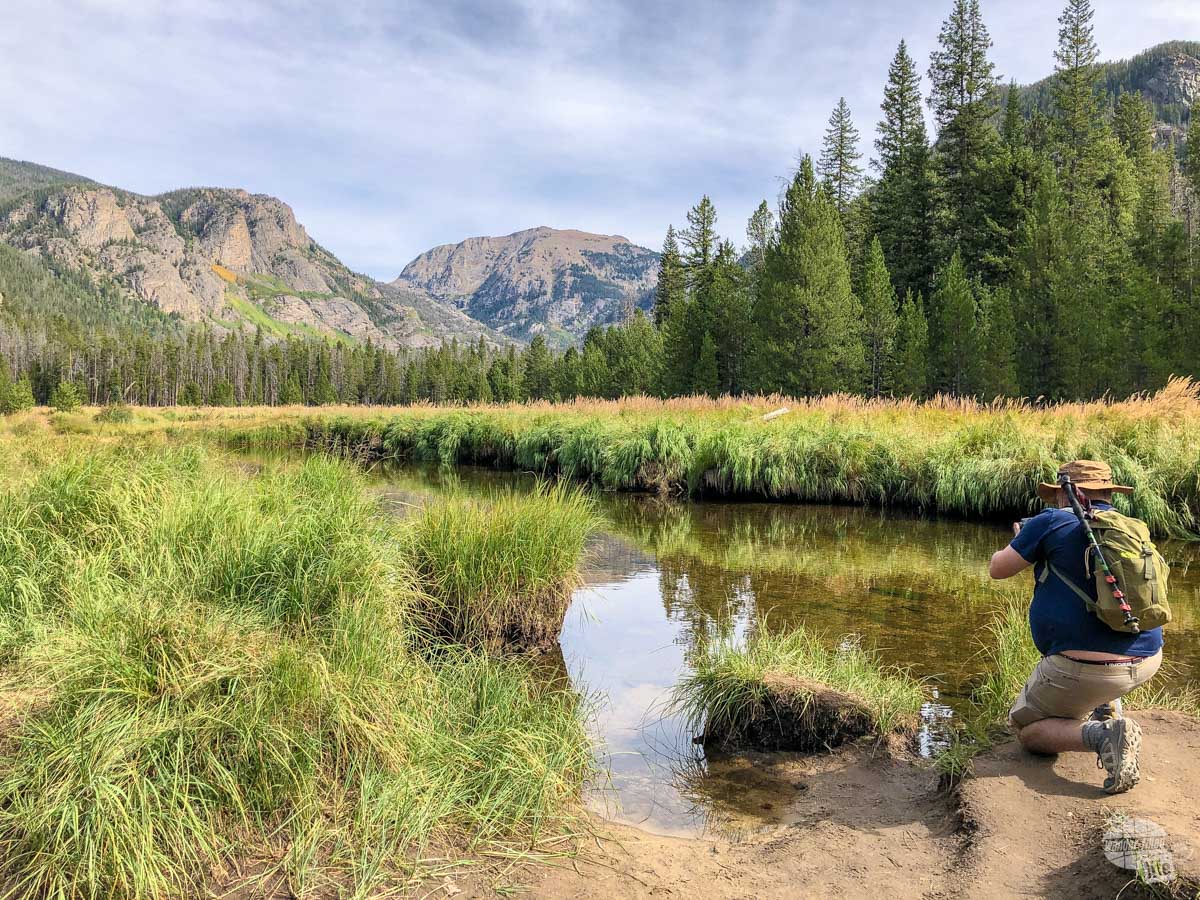
We stayed to take pictures and I got out in the field to get a better shot… and then headed back towards the truck. After passing the turnoff for the falls, we ran into another female moose right off the trail!
Bonnie has a thing for seeing moose, so seeing two on one hike was a real treat!
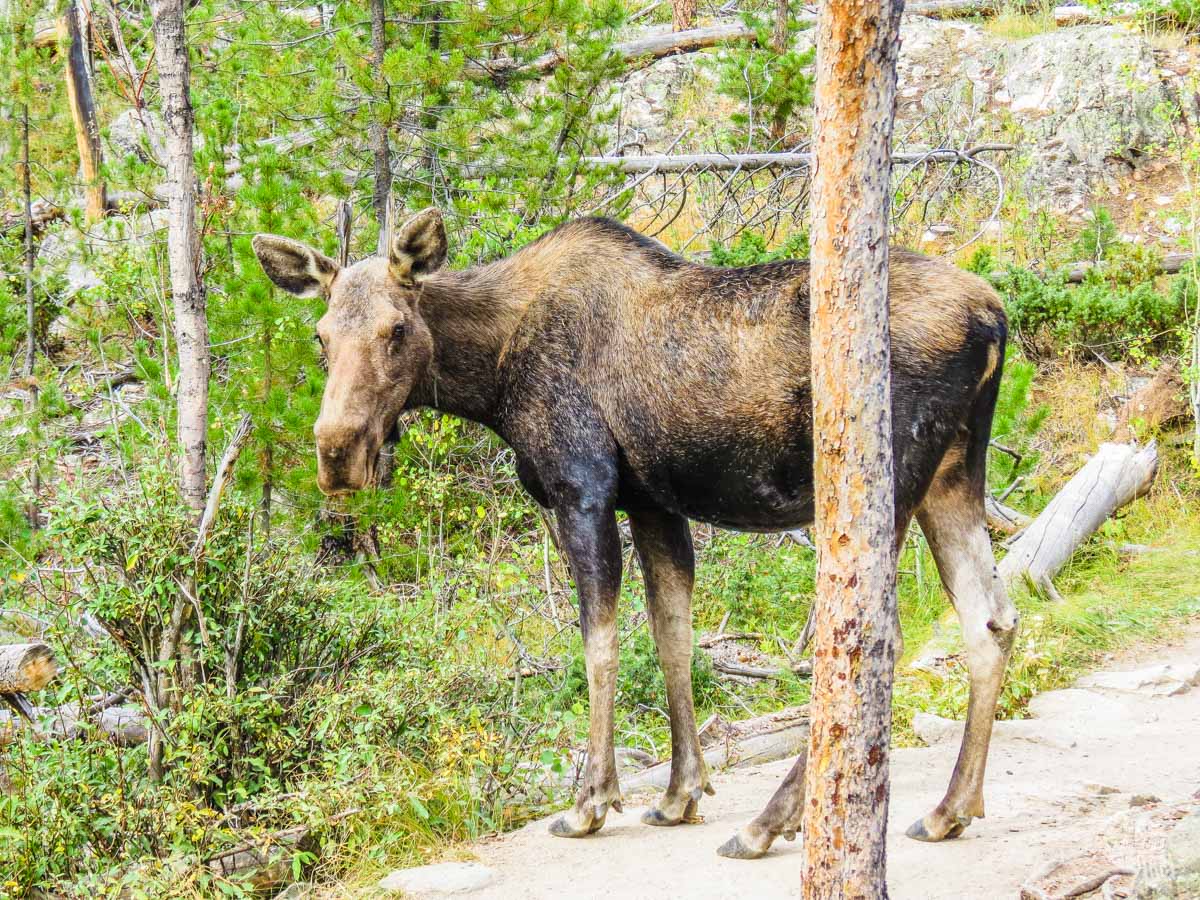
Day 3 – Driving East on Trail Ridge Road and Horseshoe Park
We got up early on a cold morning to get in a hike along the Colorado River Trail. The trail itself is quite long but there are plenty of interesting views along the way. On the out-and-back trail, you can easily turn around anytime.
We hiked out to the remains of a mining cabin a bit more than two miles down the trail for a 4.5-mile out and back round trip. It was a cold walk but gorgeous.
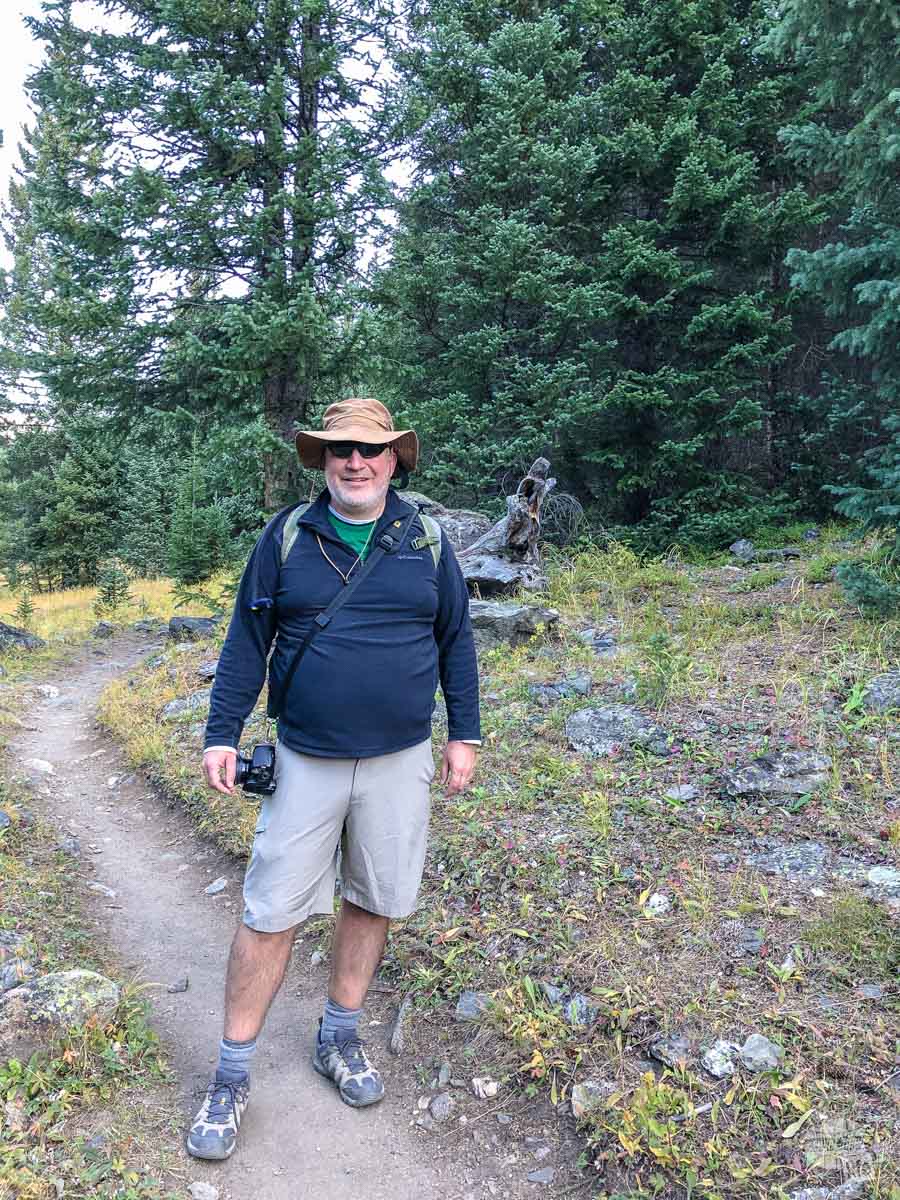
After the hike, we drove Trail Ridge Road back to the east side of the park.
While Old Fall River Road is a great drive, the drive from the Alpine Visitor Center to the Many Park Overlook is one of the most breathtaking I’ve ever driven. It’s also the highest altitude we have ever been to at 12,183 feet.
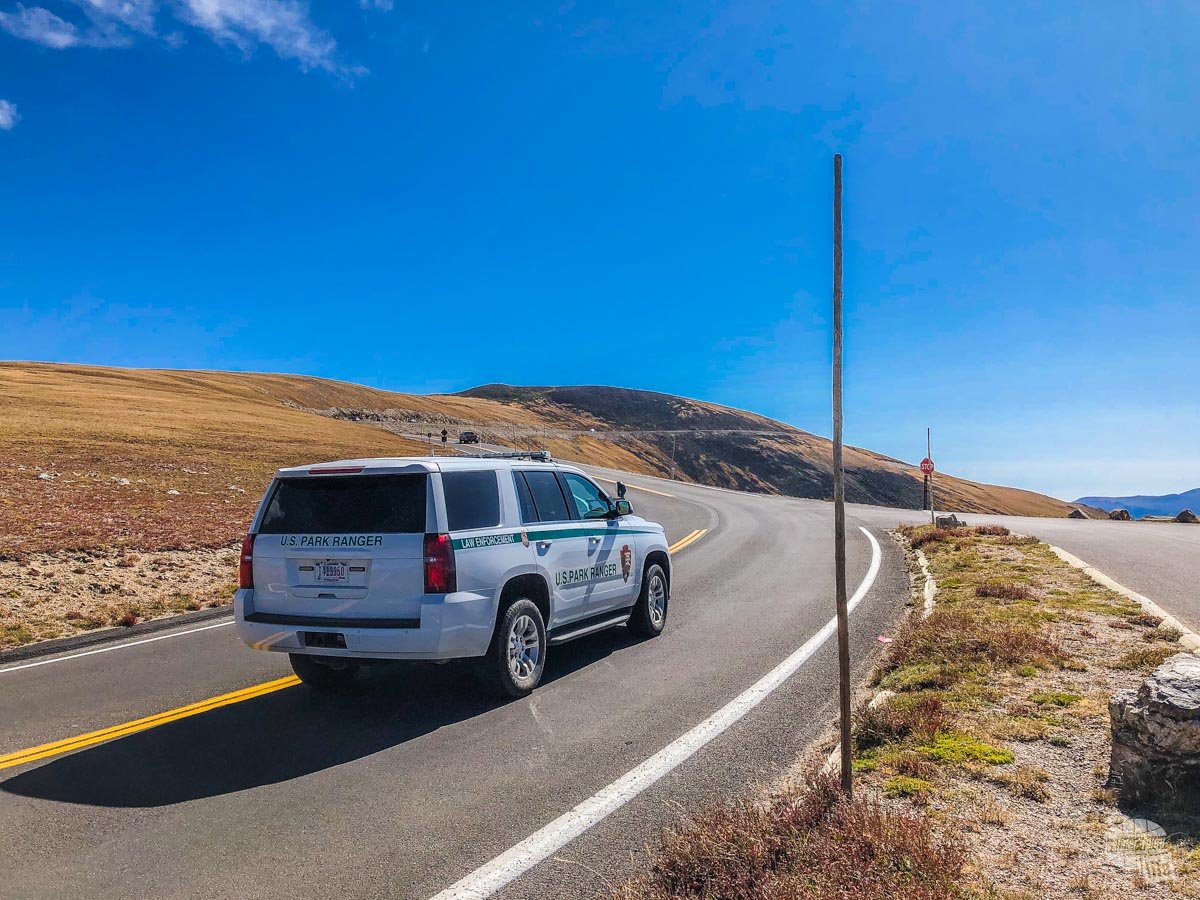
Pro tip: If you are looking for a picture at the highest point along Trail Ridge Road, you won’t find it. There is no pullout. Instead, do the hike at the Alpine Visitor Center.
The Gore Range, Lava Cliffs, Rock Cut and Forest Canyon overlooks provide dramatic views worthy of individual stops. Be sure to stop at each one on your way across.
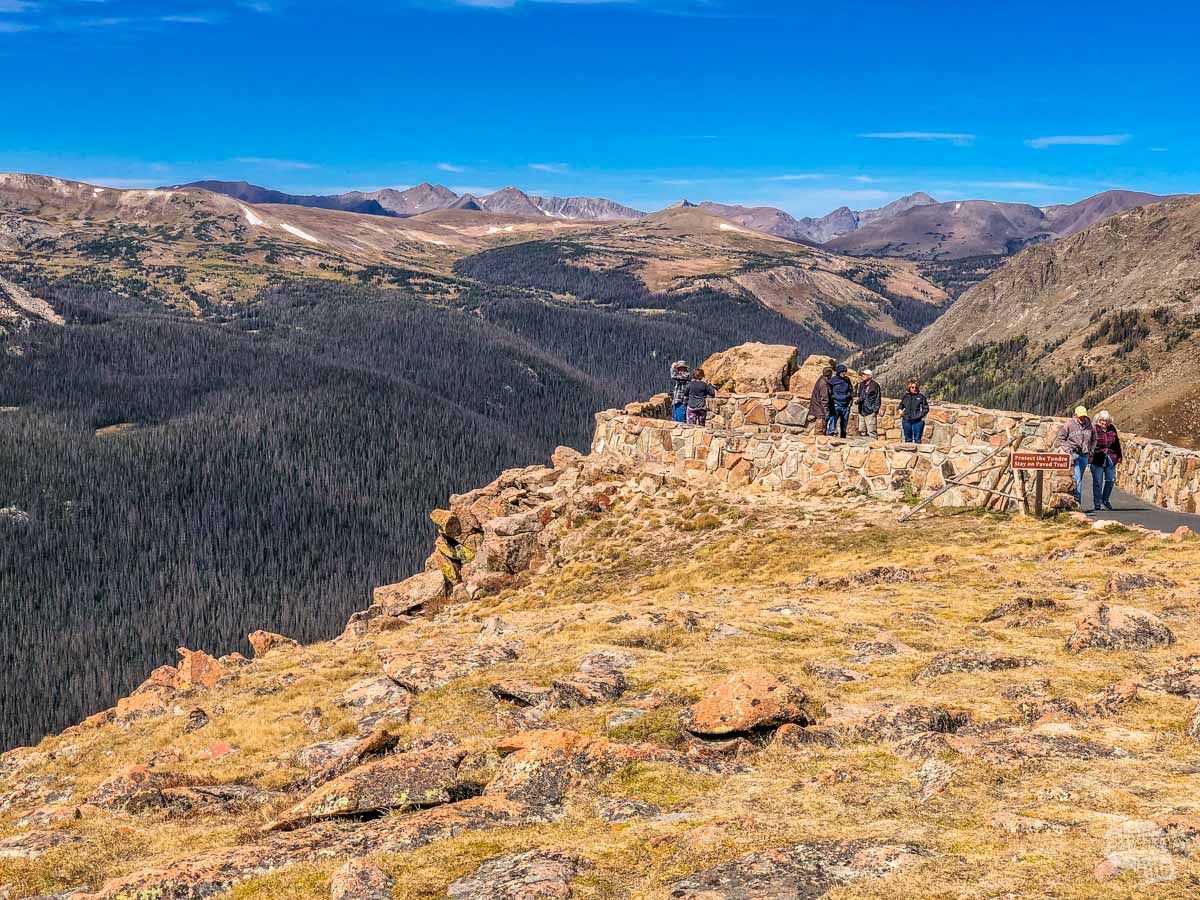
Our favorite stops, however, were the Rainbow Curve and the Many Parks Curve. Both stops have distinct but spectacular views.
It took us about an hour to drive this section of the road, stopping at each of the overlooks. If you keep heading east, just past the Many Parks Curve is the turn off for Hidden Valley. We found a great spot for a picnic here and there are some hiking trails there as well.
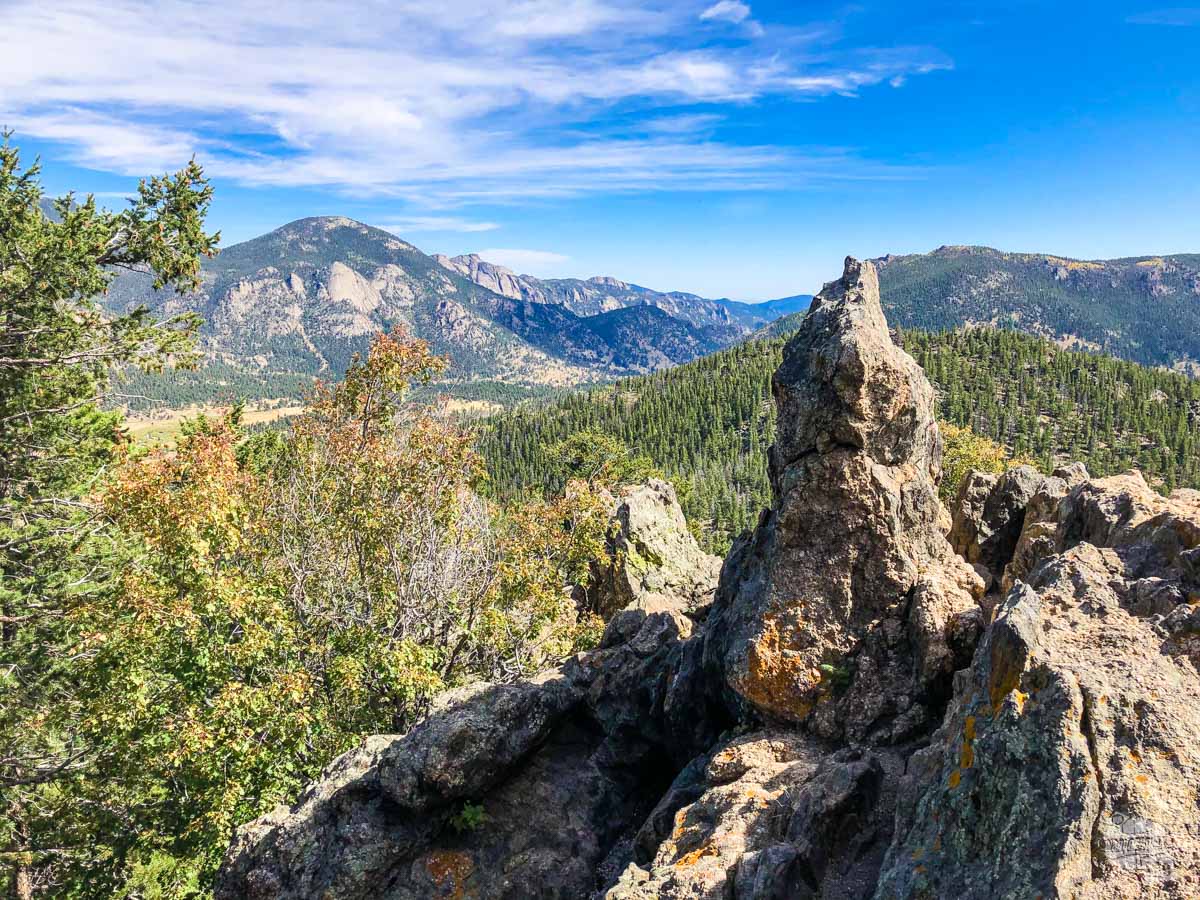
Spotting Wildlife in Horseshoe Park
We were mostly interested in securing our campsite for the night but sometimes, wildlife intercedes. As we were driving through Horseshoe Park right by Sheep Lakes, we spotted something down in the field.
At first, we thought they were elk but quickly realized it was three bighorn sheep rams! We found a spot to pull over and walked back to spend a while taking pictures of the sheep.
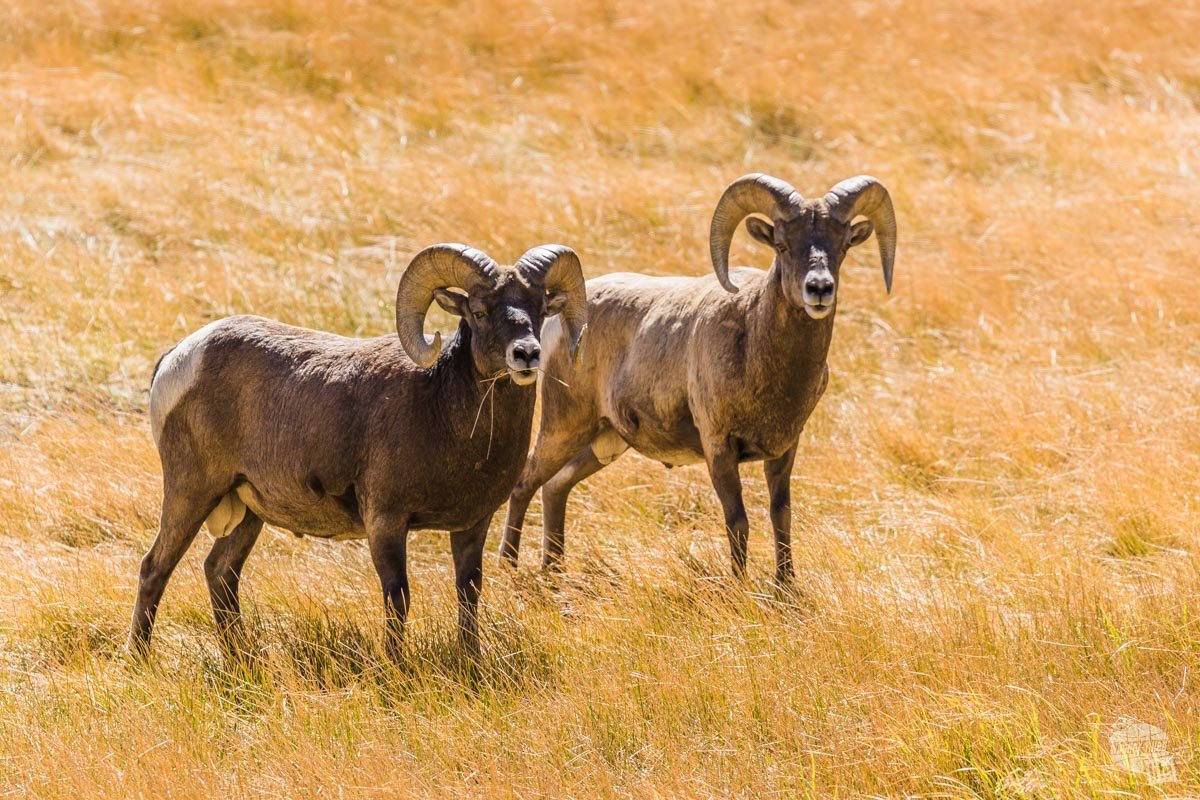
We rarely see bighorn sheep come down from the mountains outside of the winter, so it was really cool to see them right by the lakes named after them and just across from Bighorn Mountain.
After setting up camp at the Aspenglen Campground, we headed out of the park for the Fall River Visitor Center to get some info about the best spots to view the elk rut for the night. The ranger recommended we head back out to the Sheep Lakes area to look for elk later in the evening.
The ranger also said we should make a point to check out the paved, two-way portion of the Fall River Road because they had spotted a black bear over there the night before.
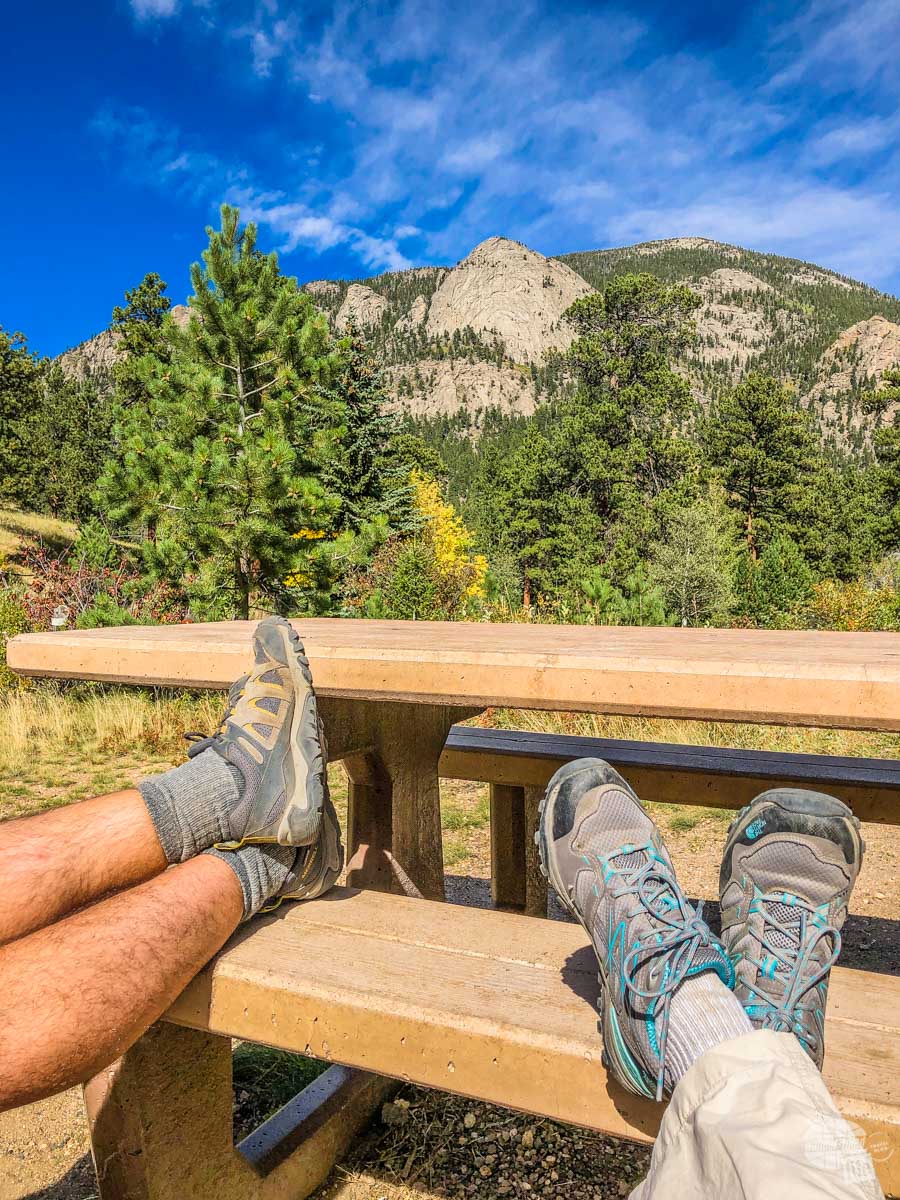
After a relaxing afternoon reading and an early dinner, we headed back out to see what we could find. We ended up just south of the turnoff for Fall River Road watching elk come out of the trees.
We stayed and watched as several cows and a few smaller bulls came out of the woods. Through the zoom lens, I could see a large bull approaching through the trees.
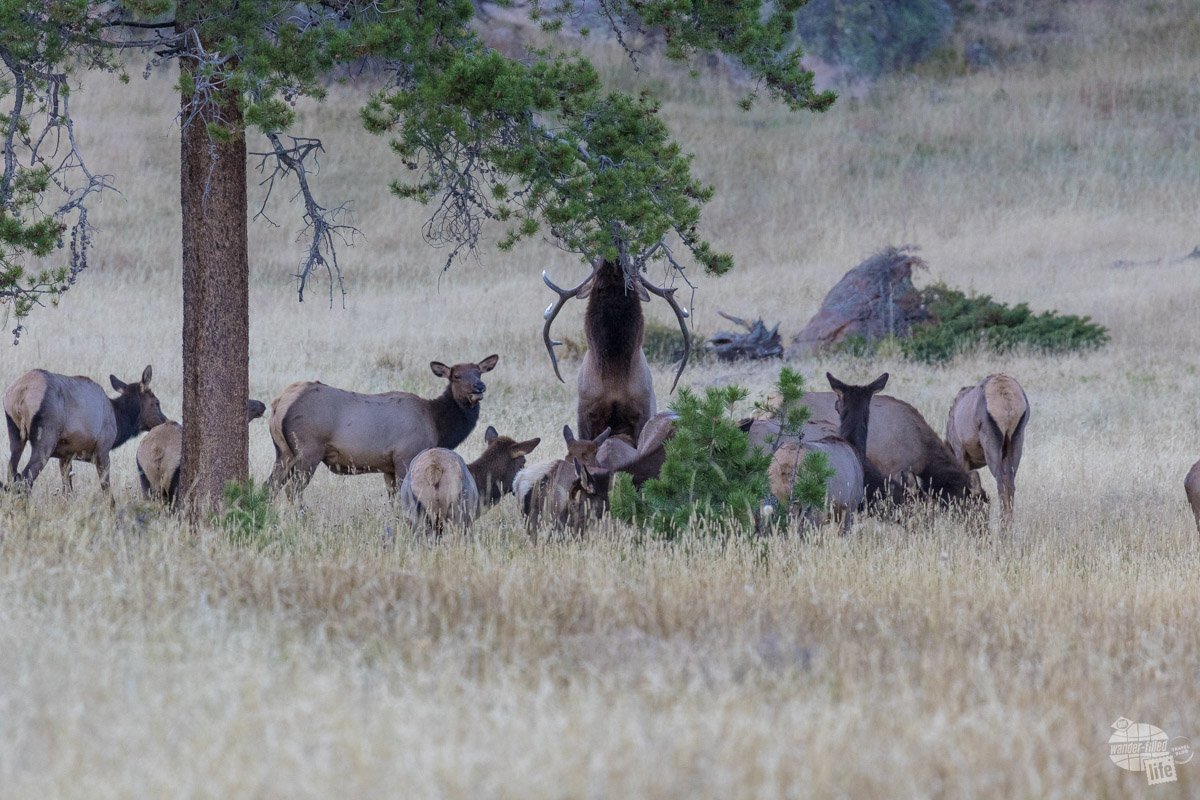
This was obviously the alpha of this harem and the cows responded to him with enthusiasm. Though it appeared he managed to mount a cow, it was very brief and he spent the rest of the evening chasing off would-be challengers.
The challengers were relentless. The elder bull was constantly running off one suitor in particular and we kept hoping to see them lock antlers but no such luck.
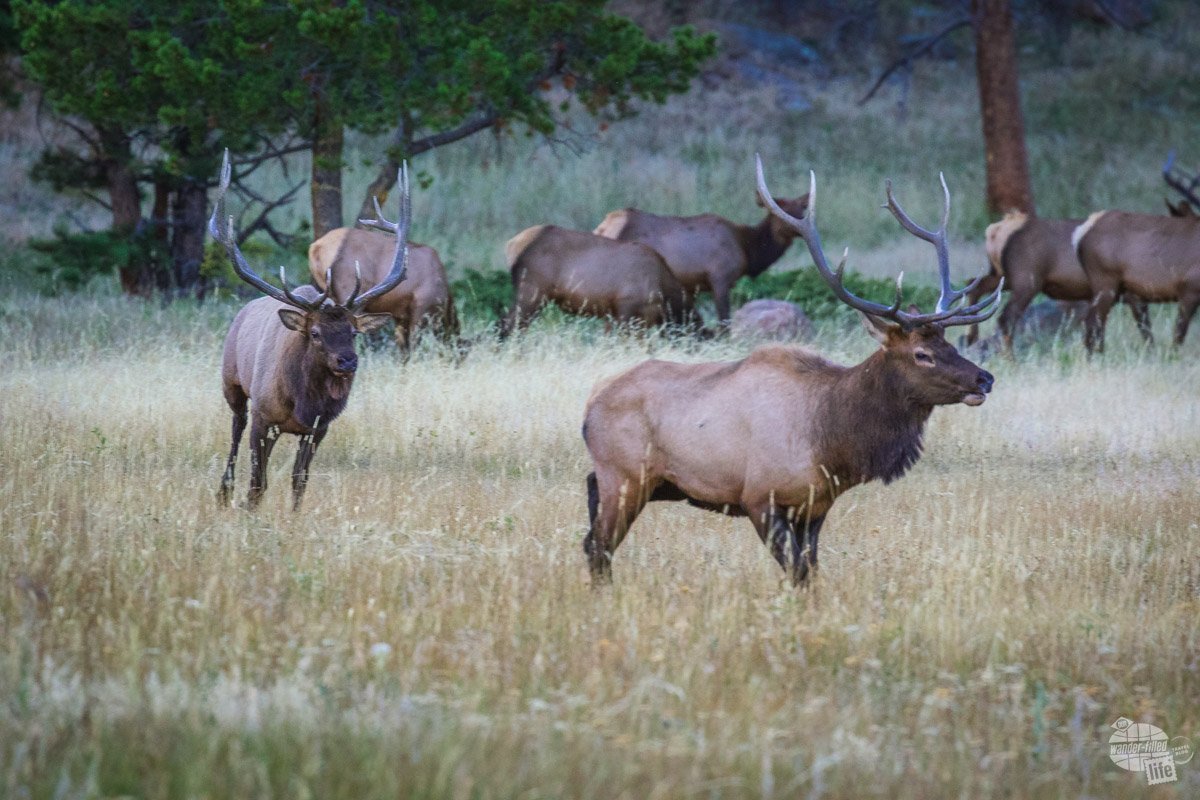
Rocky Mountain National Park Campgrounds
Regardless of how many days you have planned for your Rocky Mountain National Park itinerary, you’ll need a place to stay. If you want to stay in the park, be prepared to camp as there are no lodges. We camped in a camper van we rented from Outdoorsy on this particular trip. It was our first time using a camper van and we were glad for the mobility and agility we had. We were able to take the camper van everywhere we wanted to go in the park, including driving the unpaved Old Fall River Road.
Read more about our Outdoorsy rental here.
We camped in three different campgrounds in the park: Moraine Park, Timber Creek and Aspenglen.
Moraine Park Campground
Moraine Park seemed to be the largest of the Rocky Mountain National Park campgrounds. It also had the major advantage of being reservable. Additionally, it had the most tree cover for the majority of the sites plus has stalls for using solar showers. While we didn’t use the solar shower stall, we thought it was a nice touch. Perhaps we’ll visit again when it’s warmer and take advantage of that unique amenity.
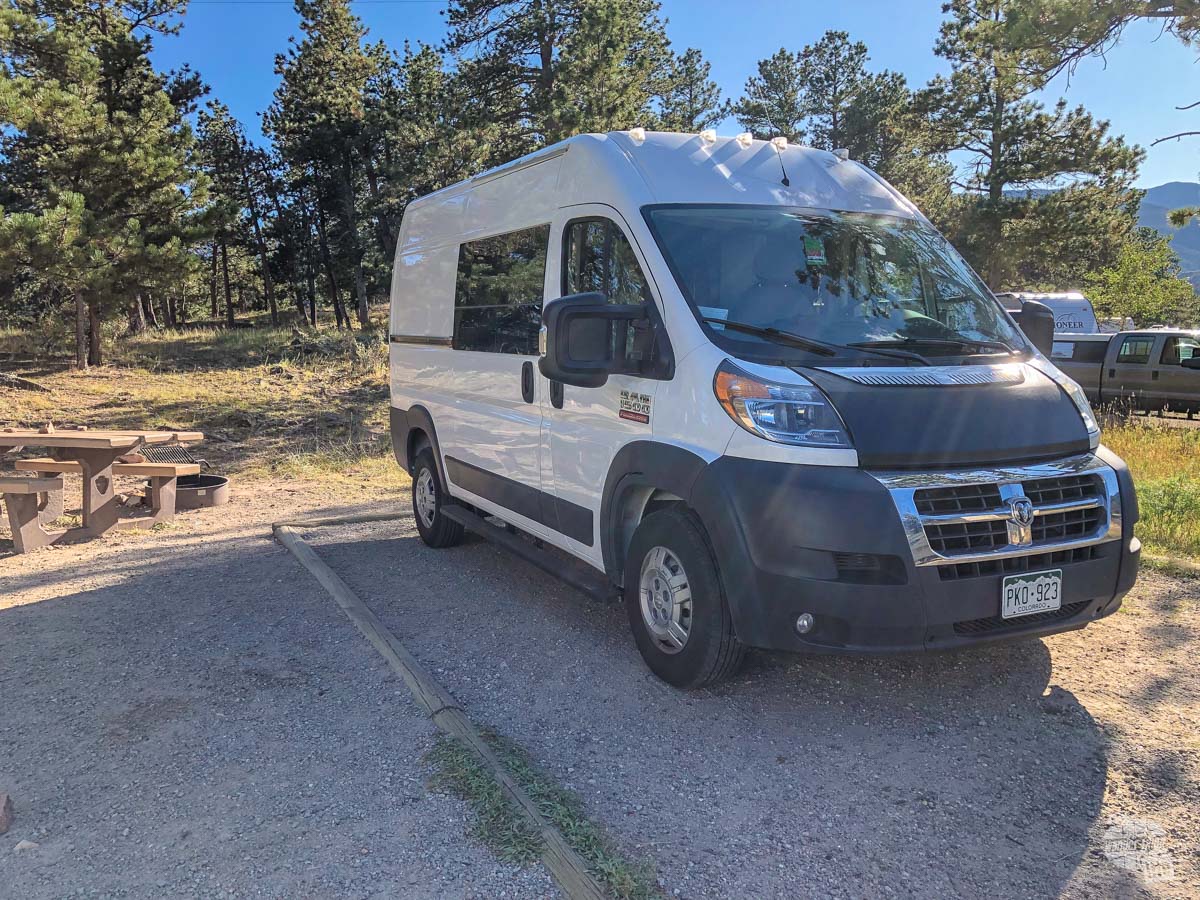
The biggest advantage to the Moraine Park Campground is its location. It is located near good trails, not far from the very popular Bear Lake area and it is an easy walk down to Moraine Park proper for wildlife watching. I’d definitely suggest making reservations in advance, as it fills completely most nights.
Timber Creek Campground
Timber Creek Campground is situated perfectly for exploring the Kawuneeche Valley and East Inlet on the west side of the park. The campsites and facilities (minus the solar shower stalls) were pretty much the same as Moraine Park but there was no tree cover. It was obvious the trees had been removed at some point and there were only younger pines that still needed to grow for several years before offering anything in the way of shade.
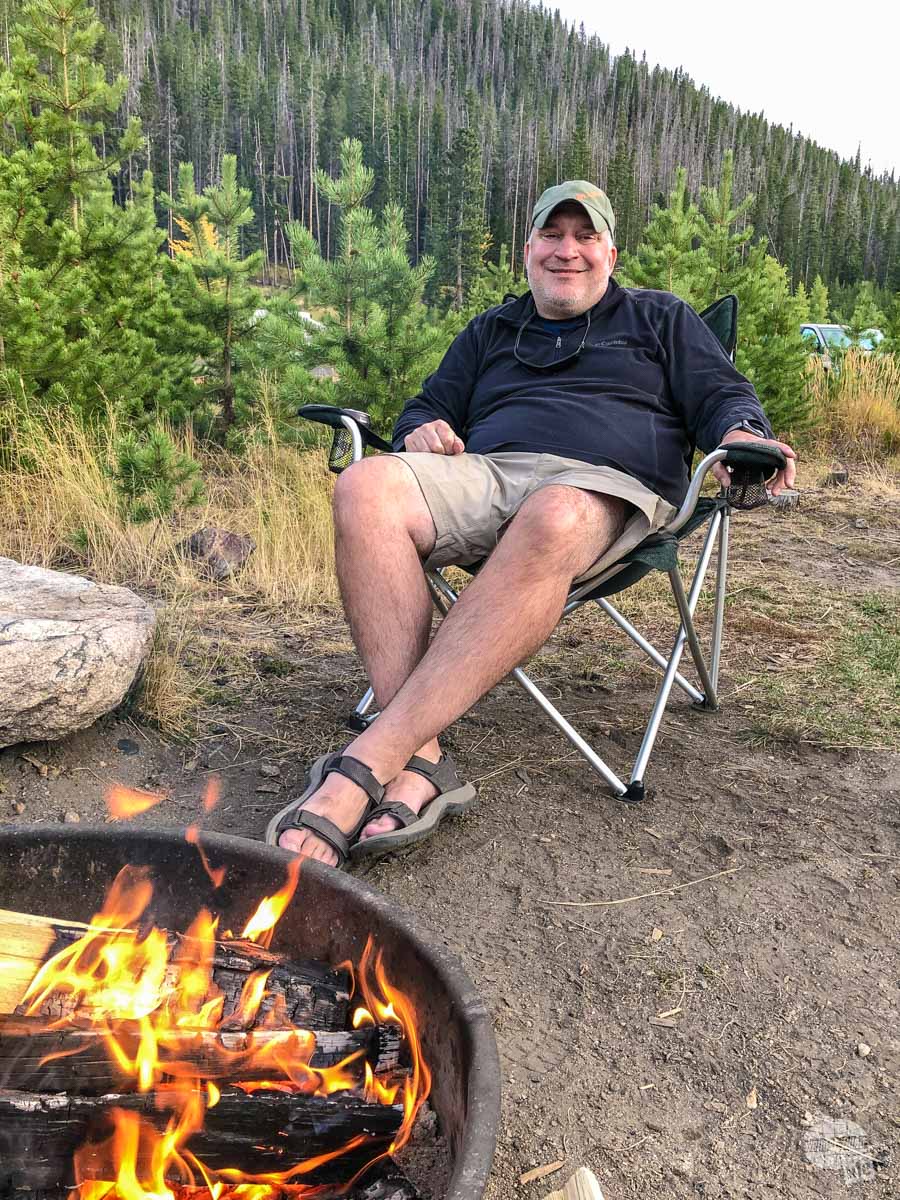
Despite the lack of mature trees, we really enjoyed Timber Creek Campground. The sites were well-spaced and provided privacy. And there were no trees to block the views of the nearby mountains. The biggest downside to this campground is the fact that you cannot make reservations.
We were easily able to get a site mid-day in late September. I’m sure in the summer you’d need to arrive as early as possible in the day to secure a site.
Aspenglen Campground
The last campground we camped at inside the park was Aspenglen. While not as convenient as Moraine Park Campground, it certainly makes up for its natural beauty. We truly enjoyed the view as we sat outside reading and relaxing. It was also an easy drive to Horseshoe Park for wildlife viewing.
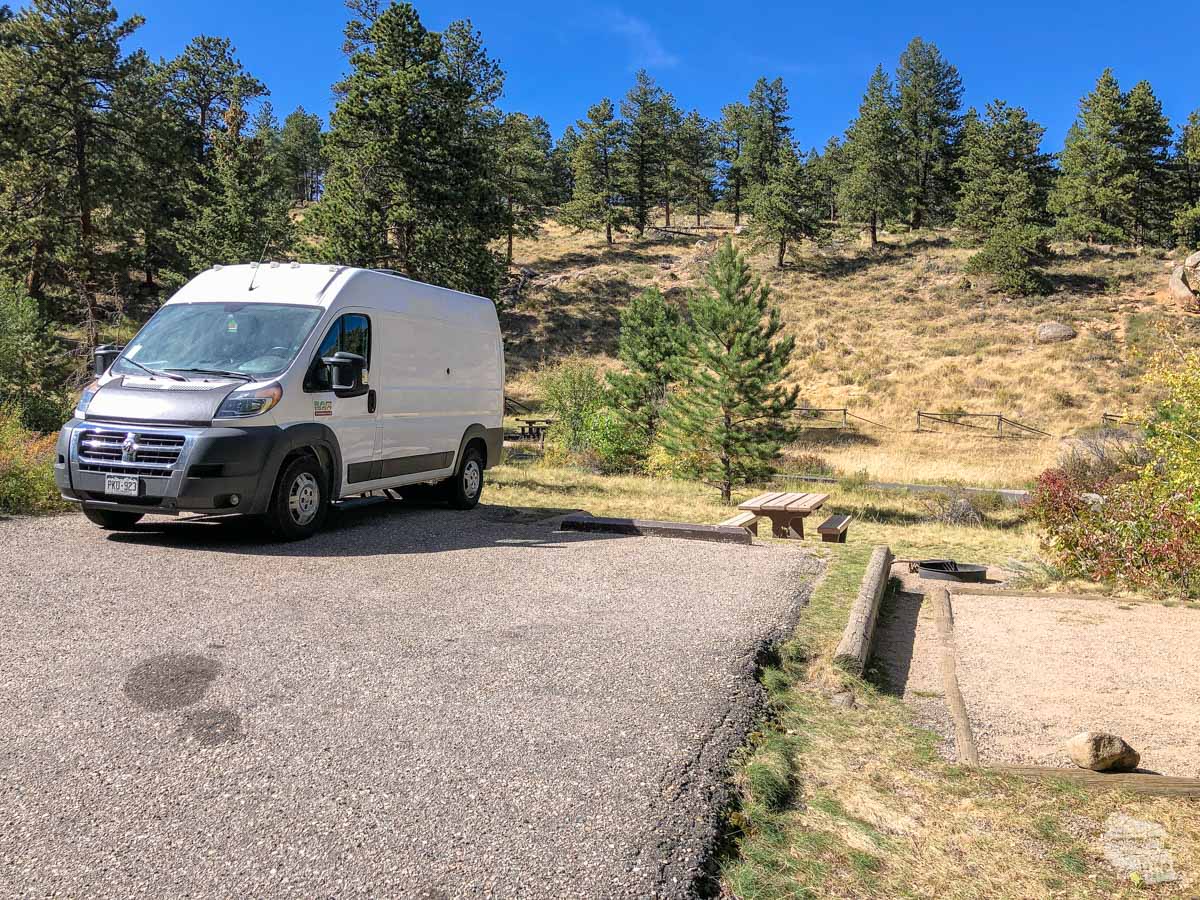
Another plus for Aspenglen Campground was the newly renovated bathrooms! While still basic with only toilets and sinks, the bathhouse was at least new and very clean. There was even a dishwashing station, which we always appreciate.
While all the campgrounds were nice, I’d say Aspenglen was our favorite. The sites were a bit bigger, the views (on the B loop, at least) were fabulous and the bathrooms were certainly nicer than the others.
Camping Outside Rocky Mountain National Park
On our way up to Rocky Mountain National Park, we ended up staying at the LaVerne M. Johnson Park for our first night. Located in Lyons, it is a really nice campground located right along a creek. My only grumble was the showers were closed when we were there. That said, we were able to easily walk into town for dinner and that was great.
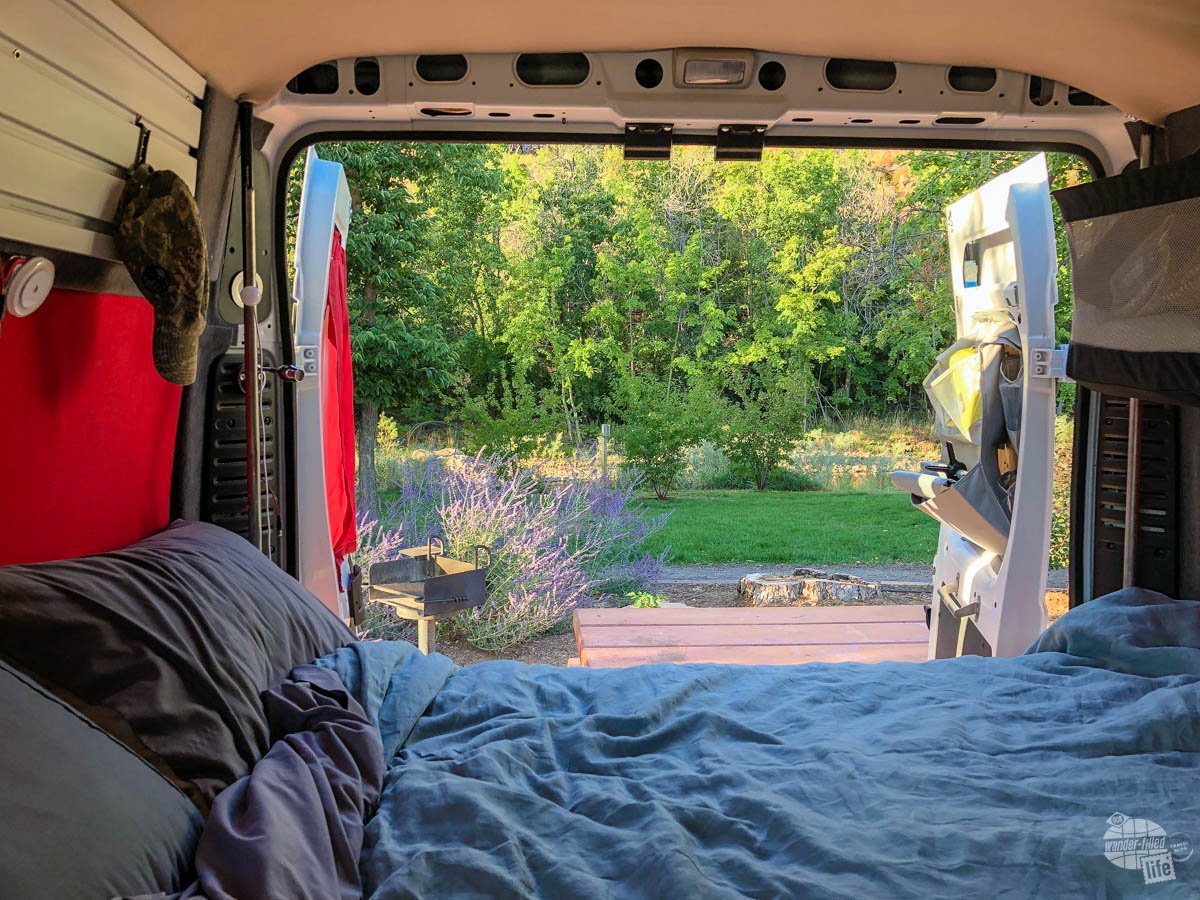
Read our campground reviews here.
Where to Eat in and around Rocky Mountain National Park
If you’re camping in the park, you’ll need to bring your own food. The snack bar at the Alpine Visitor Center is the only place to get food in the park and is not easy to get to. Nor is it open year-round. There are plenty of options just outside the park, on both the east and west sides, though.
We stocked our cooler for our trip, so we didn’t need to do much in the way of eating out. But, we did visit a couple of restaurants in Estes Park. On the way into Rocky Mountain National Park, while staying in Lyons, we ate at Pizza Bar 66 and got to watch the Georgia football game. The restaurant had good pizza/bar food but nothing exciting.
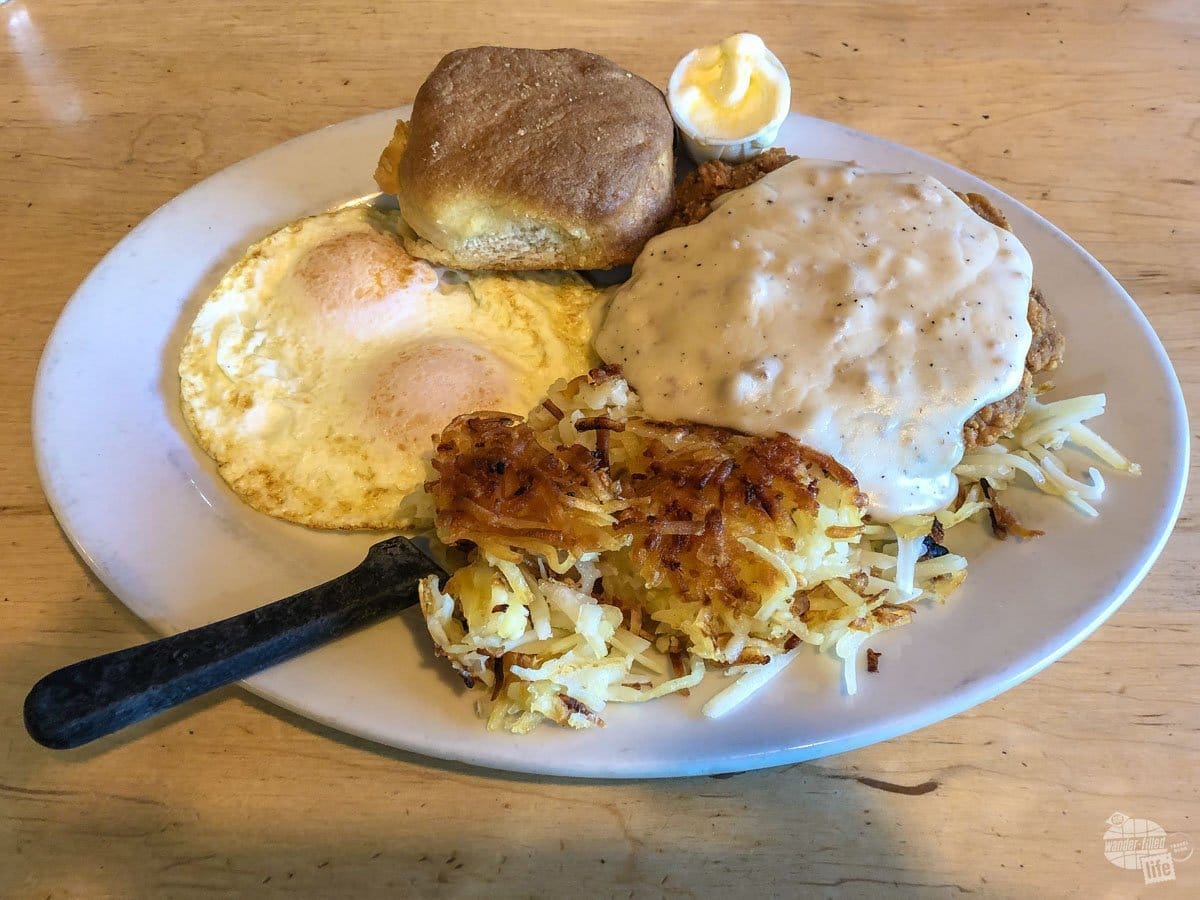
On the way out of Rocky Mountain National Park, we stopped at the Big Horn Restaurant in Estes Park for a hearty breakfast with all the fixings. I had a chicken-fried steak and eggs to die for. I would gladly return.
Final Thoughts on our Rocky Mountain National Park Itinerary
We are so glad we made it back to Rocky Mountain National Park. Three days felt just right in terms of seeing the highlights, having time to take some good hikes and time to see some wildlife.
The big thing to understand about the park is its proximity to major metro areas (Denver, Boulder, Fort Collins) makes for crowds on the weekends.
If we were looking to do this trip while staying in a hotel, we would stay two nights in Estes Park and one night in Grand Lake.
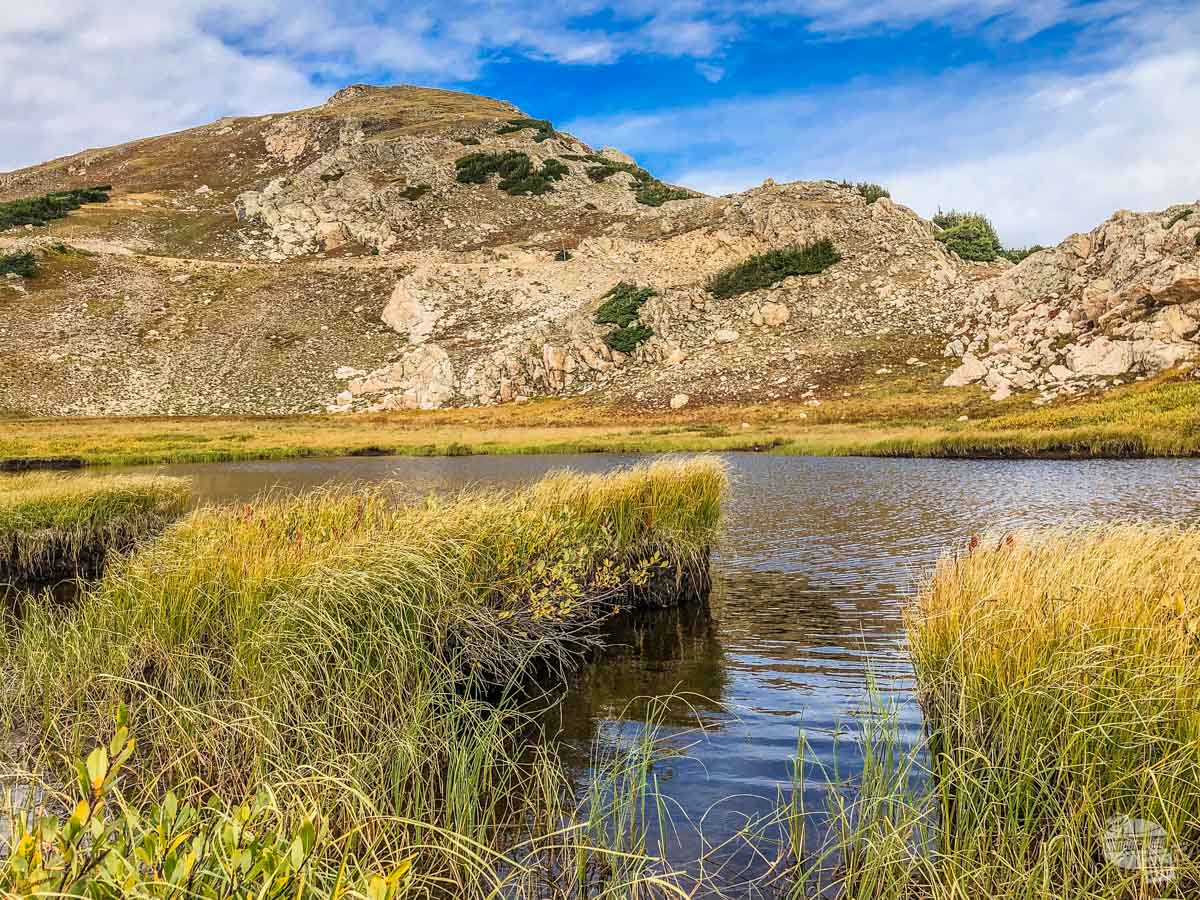
The other big thing to understand is the altitude. Much of the park is over 10,000 feet. That can have some serious impacts on your ability to hike, etc. Bonnie has struggled with altitude in the past and made a point to drink a lot of water before our trip and did just fine.
Still, we loved our time here. September turned out to be just about the perfect time for a visit. There were some cold moments but we enjoyed cooler weather after suffering from heat in Atlanta. The elk rut was something to behold. Three days seemed to be the perfect amount of time to see the highlights of the park, get in some good hikes and still have time in the evenings to see the elk rut.
Whether you are going for the breathtaking views on Trail Ridge Road, the plethora of hikes or the wildlife in the valleys, you are in for a treat.
Travel Resources
What do you use to find a flight?
We use Skyscanner to find deals on flights. Skyscanner has a great interface and compares tons of airlines for the best pricing and routing. That said, it does not always have every airline and some airlines will have better deals on their website. Still, Skyscanner is a great place to start.
Click here to search for a flight.
What do you use to find a hotel?
We typically stay at Hilton properties, so we use the Hilton website. You can find good Hilton Honors discounts or AAA discounts for a hotel there. We make great use of our free night certificates from our Hilton Honors American Express.
Click here to book a Hilton property.
If there are no Hilton properties available, we use TripAdvisor to read reviews and book the hotel. We find we can get the best price that way.
Click here to search for a hotel.
We recently partnered with Stay22 to add interactive maps to each of our destination posts. This will allow you to see a plethora of hotels and vacation rentals all in one responsive map of the area.
What if I need more space than I can get at a hotel?
We use Vrbo for the times when we have rented a cabin for a weekend getaway, like this cabin in Townsend, TN, or needed to rent a house for a large family vacation. We had a great experience with them in terms of refunding deposits when COVID hit and will continue to use them.
Click here to search for a vacation rental.
Who do you use for rental cars?
As a general rule, we book with Hertz for rental cars. We have had nothing but good experiences with them. Plus, we really like unlimited mileage and not worrying about crossing state lines. We have even rented from Hertz overseas in both Slovenia and Croatia.
Click here to book a rental car.
How about booking a cruise?
We have found some amazing prices for booking a cruise through Cruise Direct. We have saved a lot of money on our cruises compared to what we found elsewhere, making a last-minute Bahamas cruise even cheaper.
Click here to book a cruise.
What if I want to rent an RV?
We highly recommend Outdoorsy for RV rentals. We rented a camper van for a week to visit Rocky Mountain National Park for the elk rut and Custer State Park for the Buffalo Round-Up and had a blast. The program was easy to use and we really enjoyed the freedom of having a camper van for that trip.
Click here to rent an RV.
What do you use for booking tours?
We don’t often book tours. Typically, we like to do stuff on our own. That said, there are some experiences you can’t have any other way. So, when we do want to book a tour, we always check Viator first.
Click here to book a tour.
Do you use anything to get discounts on the road?
We make extensive use of both Good Sam and AAA on the road. Good Sam is normally regarded as a discount card for RVers at campgrounds and Camping World but anyone can use the 5 cents off a gallon at the pump at both Pilot and Flying J.
Click here to get a Good Sam membership.
We have had AAA as long as we have been married and it has more than paid for itself in discounts at hotels, aside from the peace of mind of having roadside assistance. Add in paper maps and the ability to get an international driver’s license and it is more than worth it for any traveler out there.
Click here to get a AAA membership.
